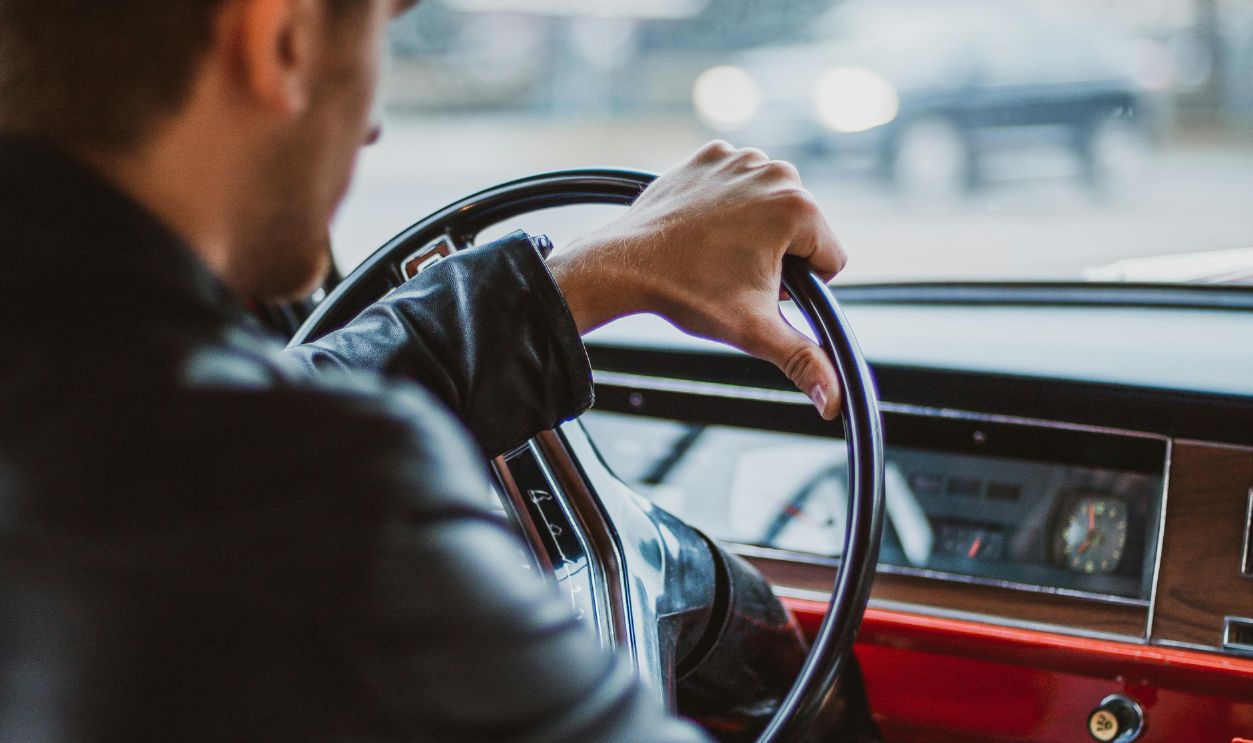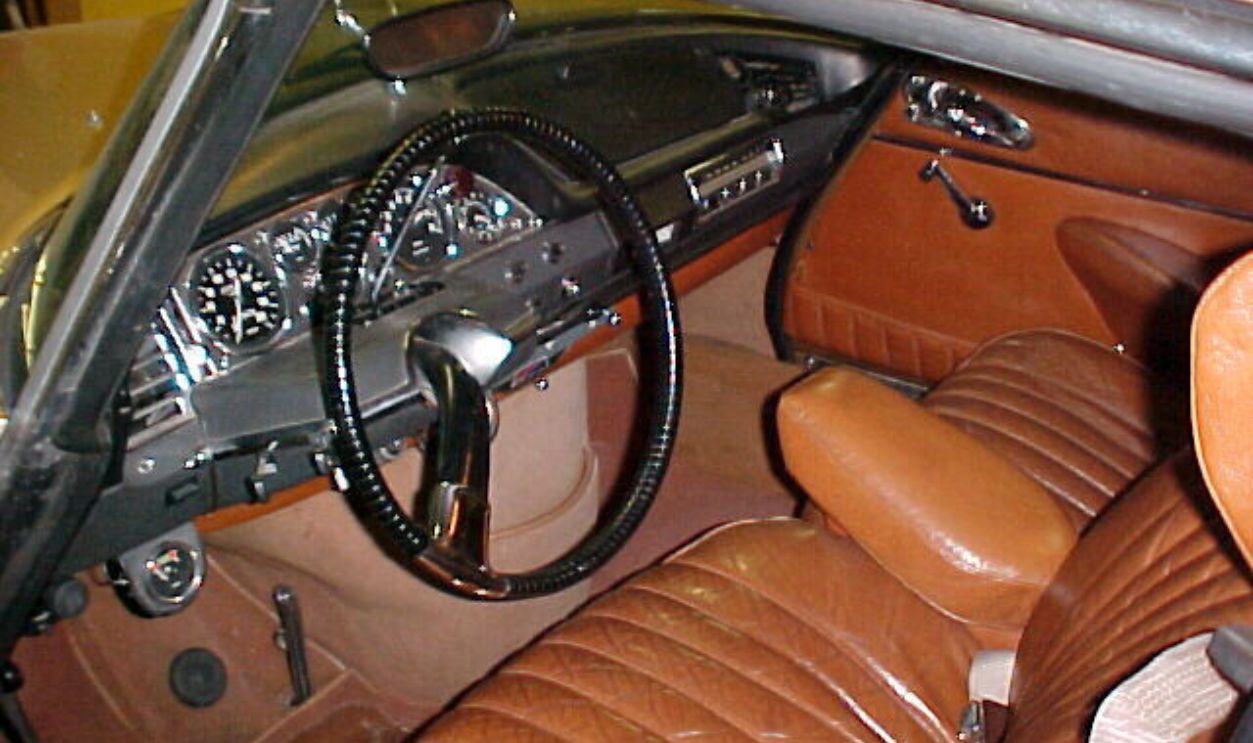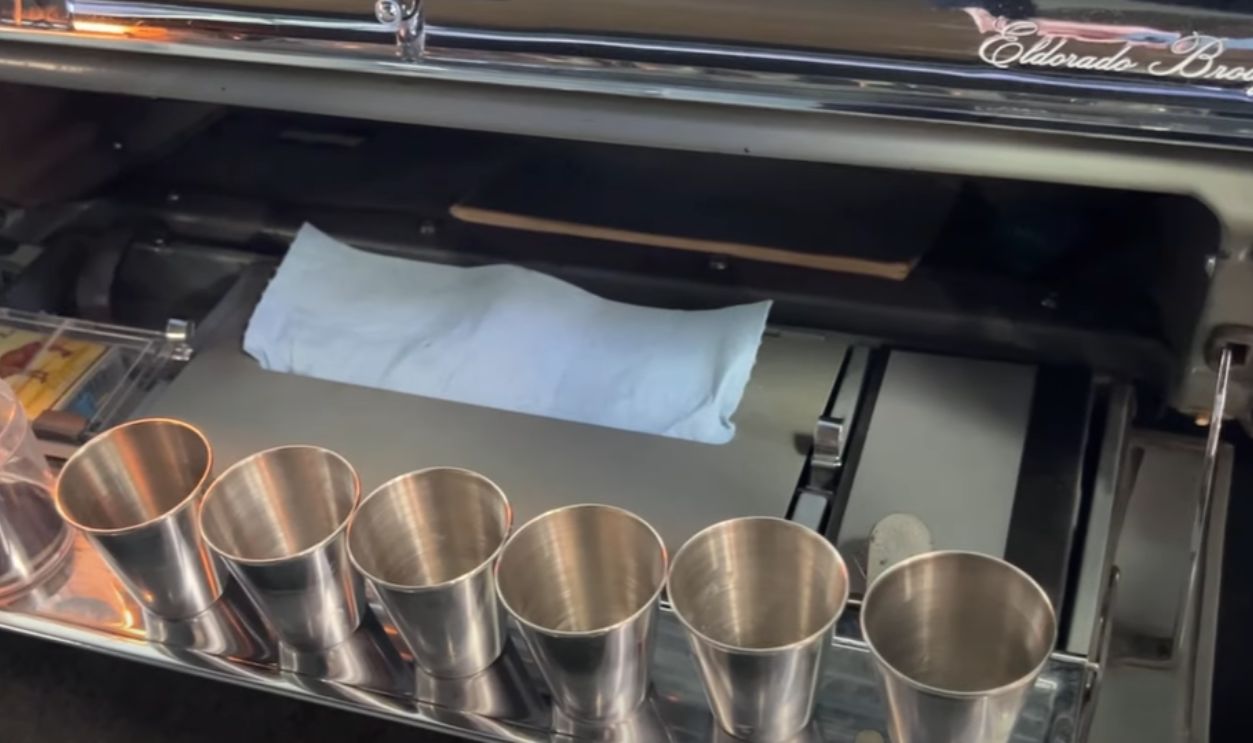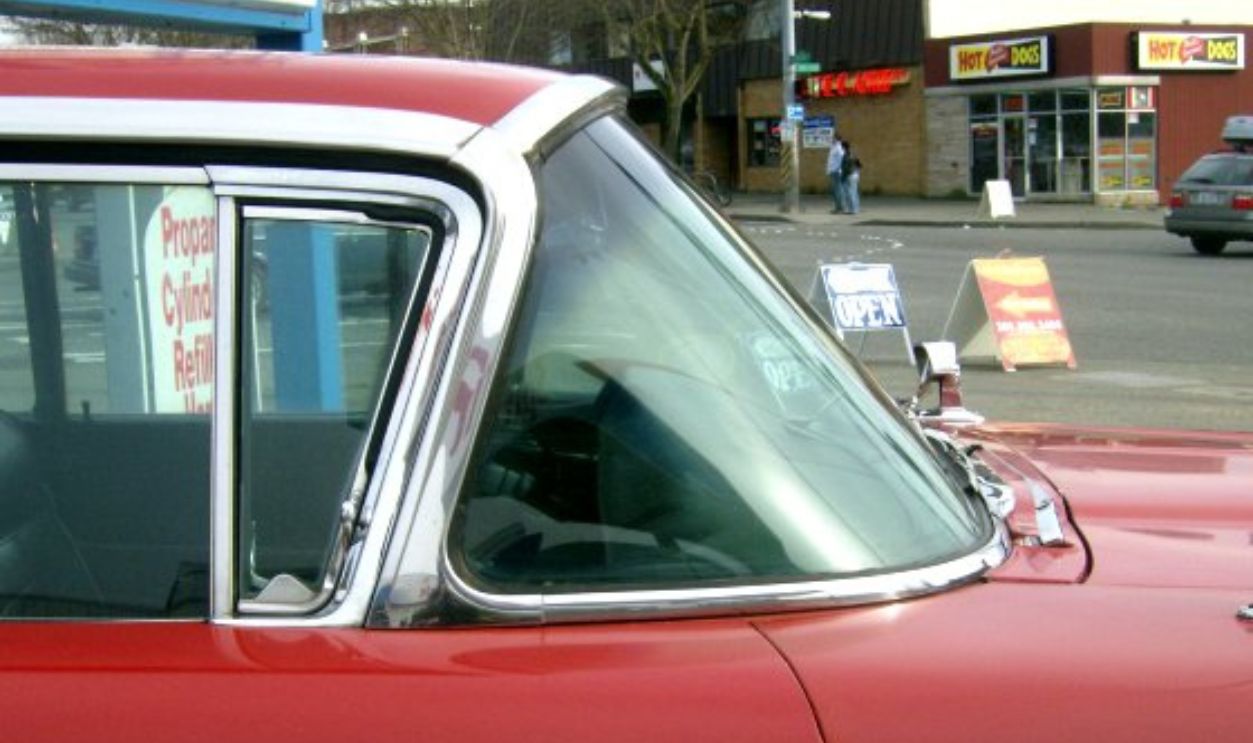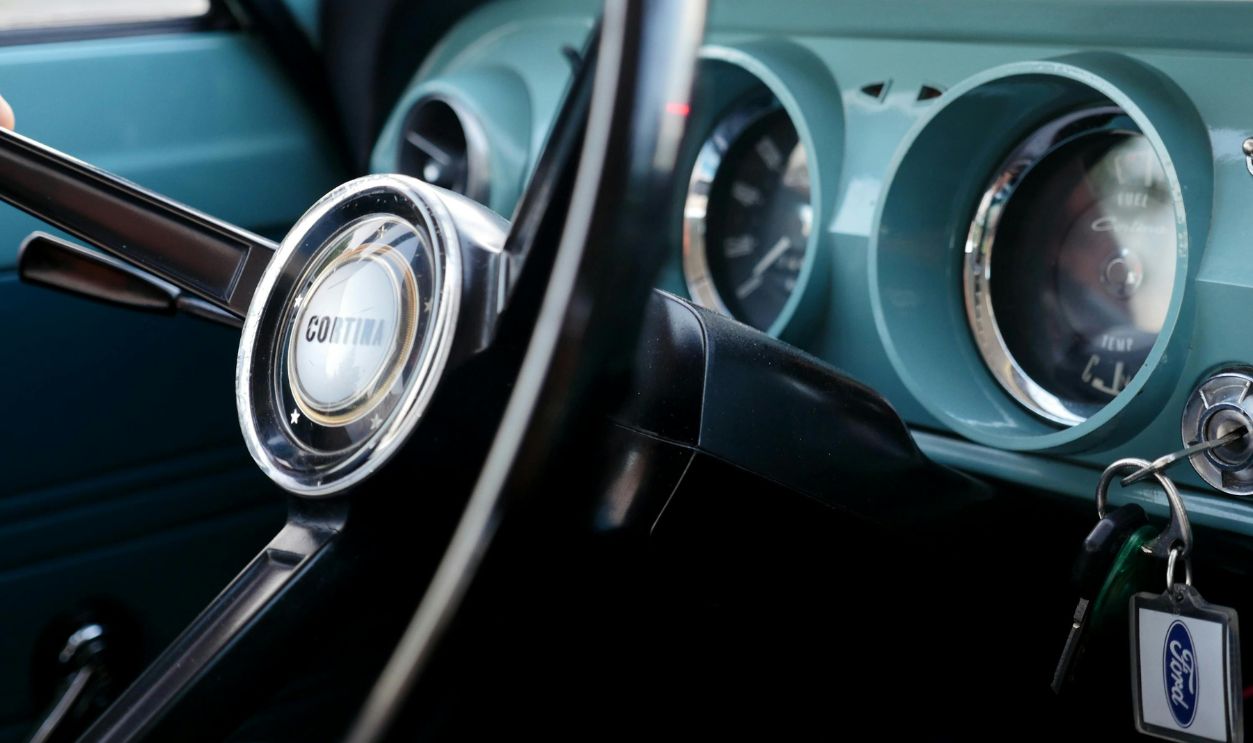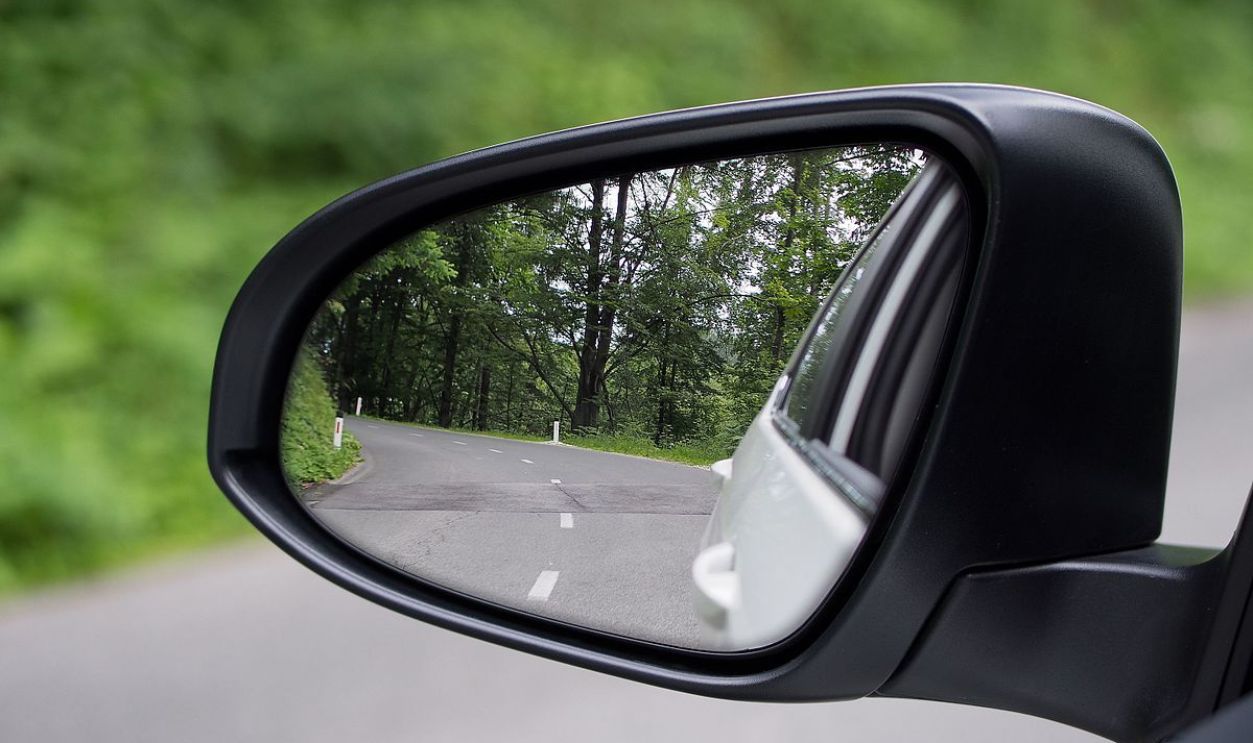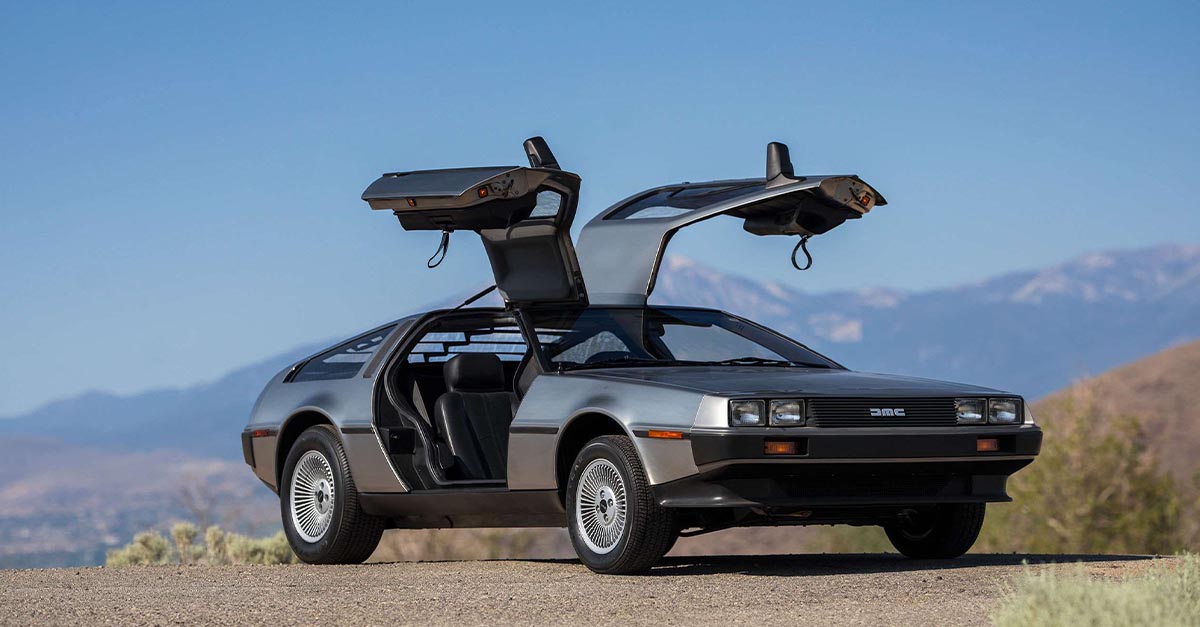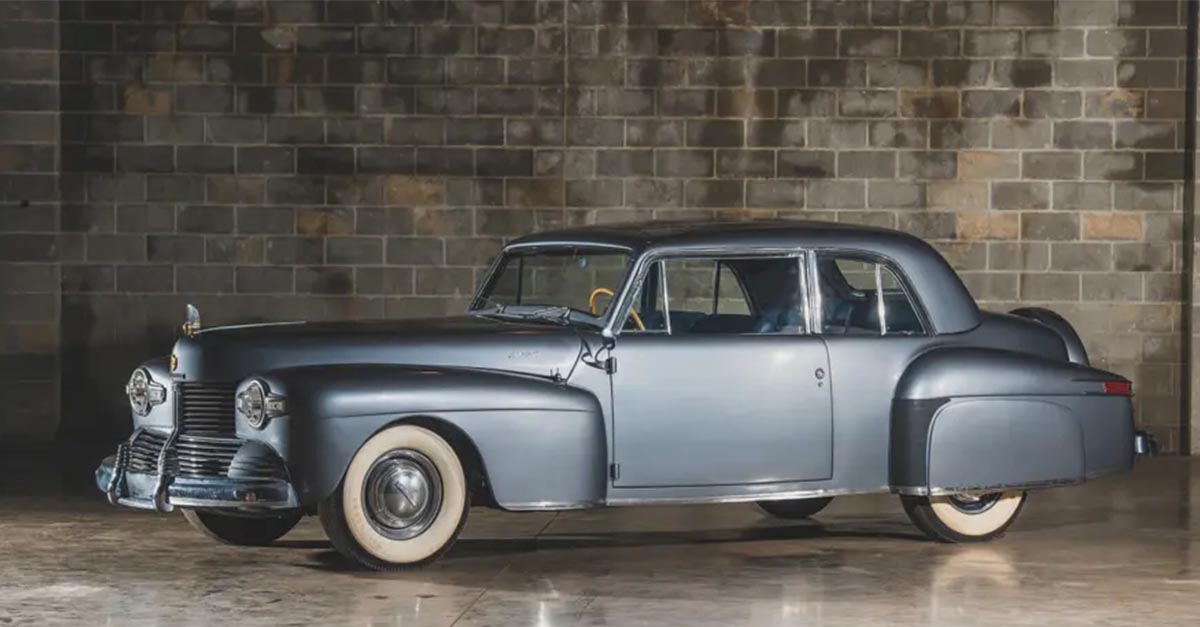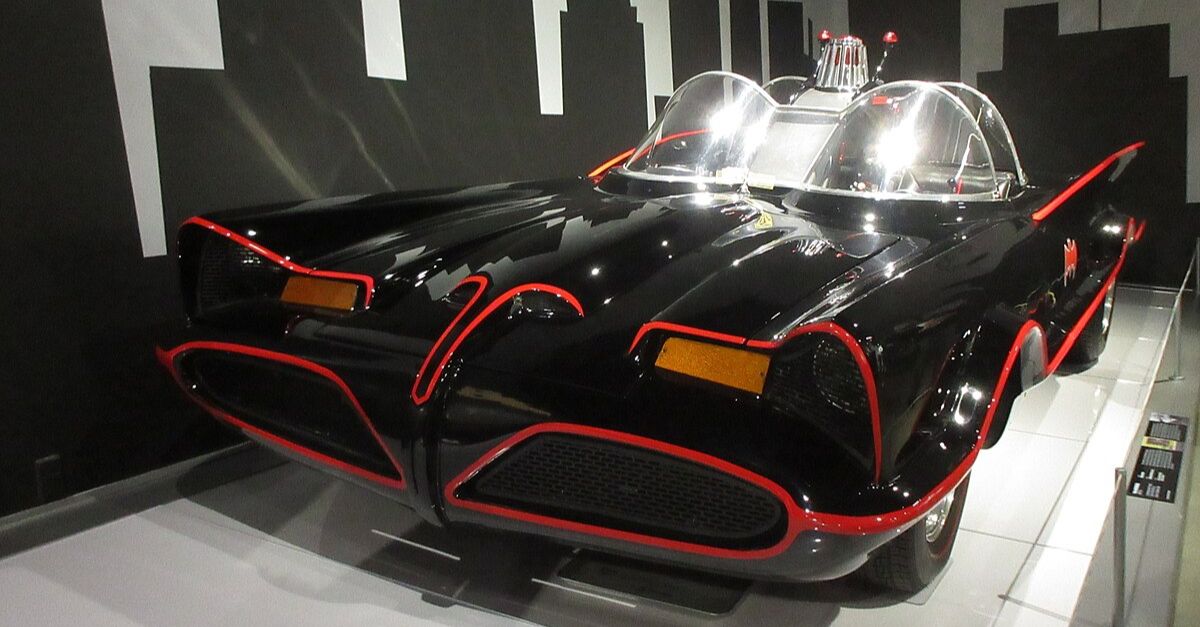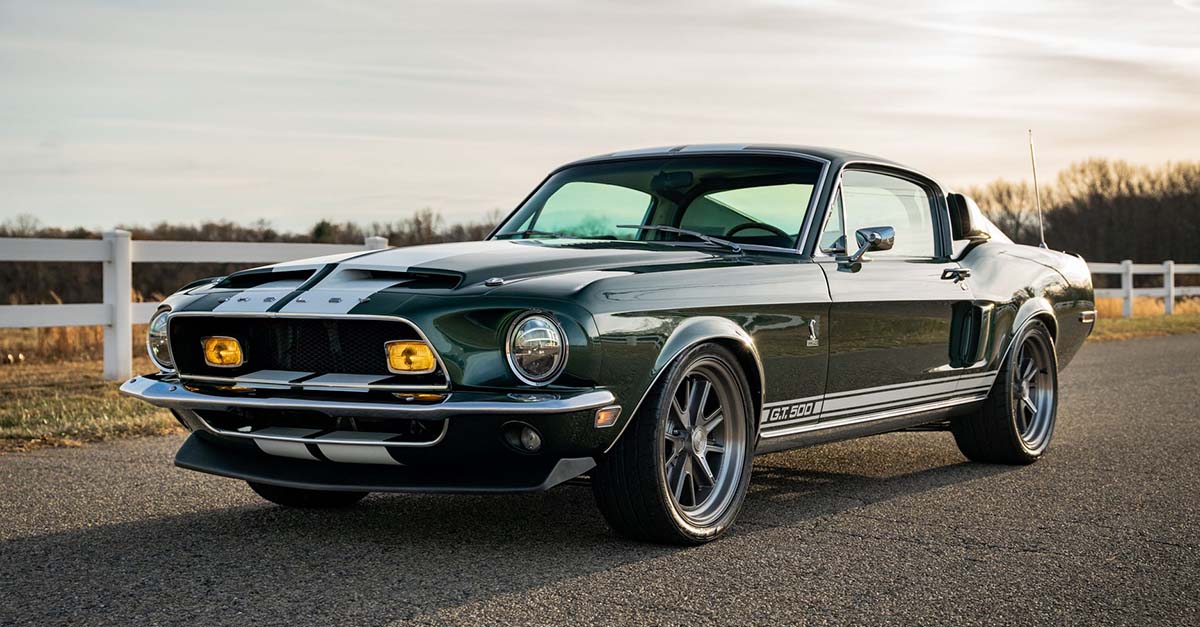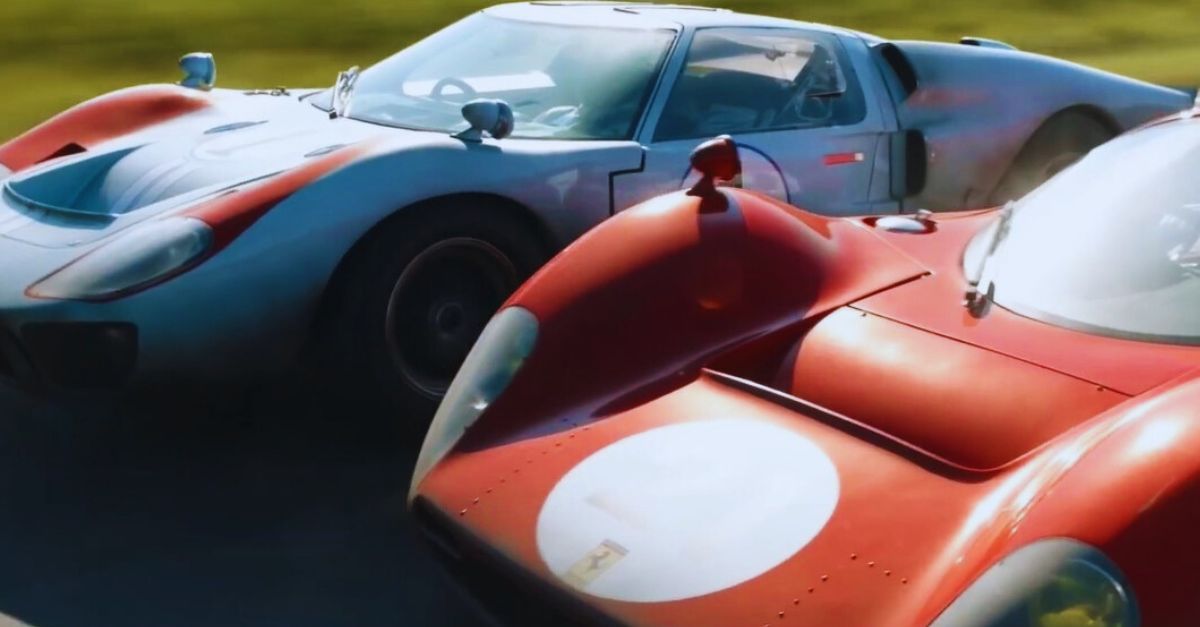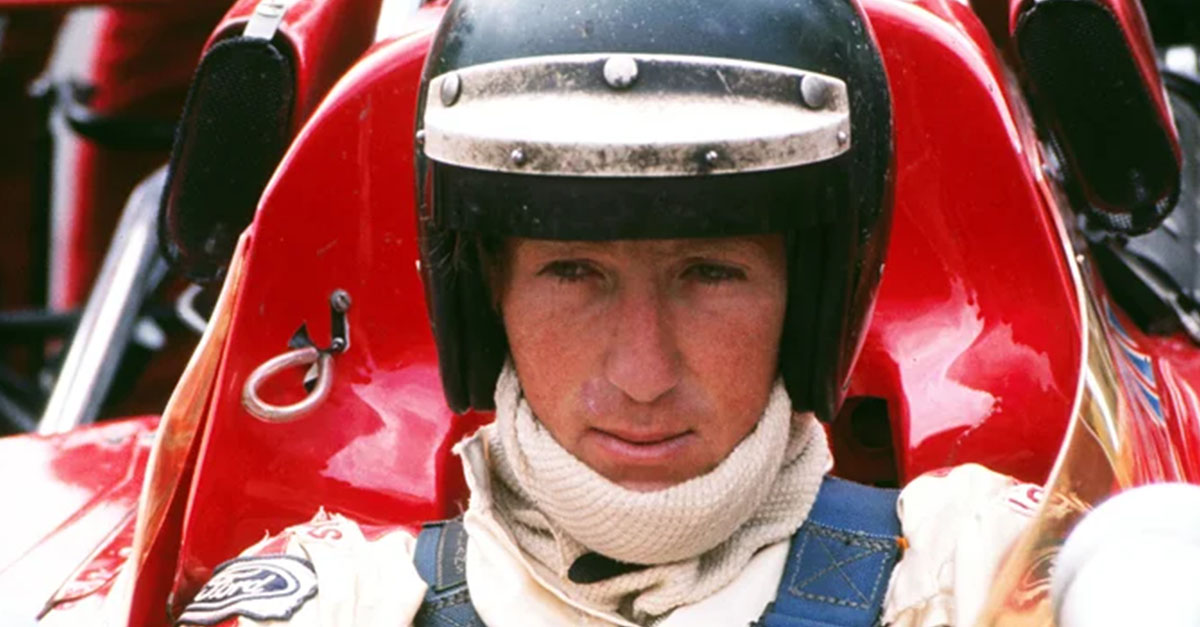The Defining Era Of Cars
Cars in the 60s were an extension of one’s personality. Driven to capture the spirit of an unforgettable era, this article unveils the standout features that defined 1960s cars.
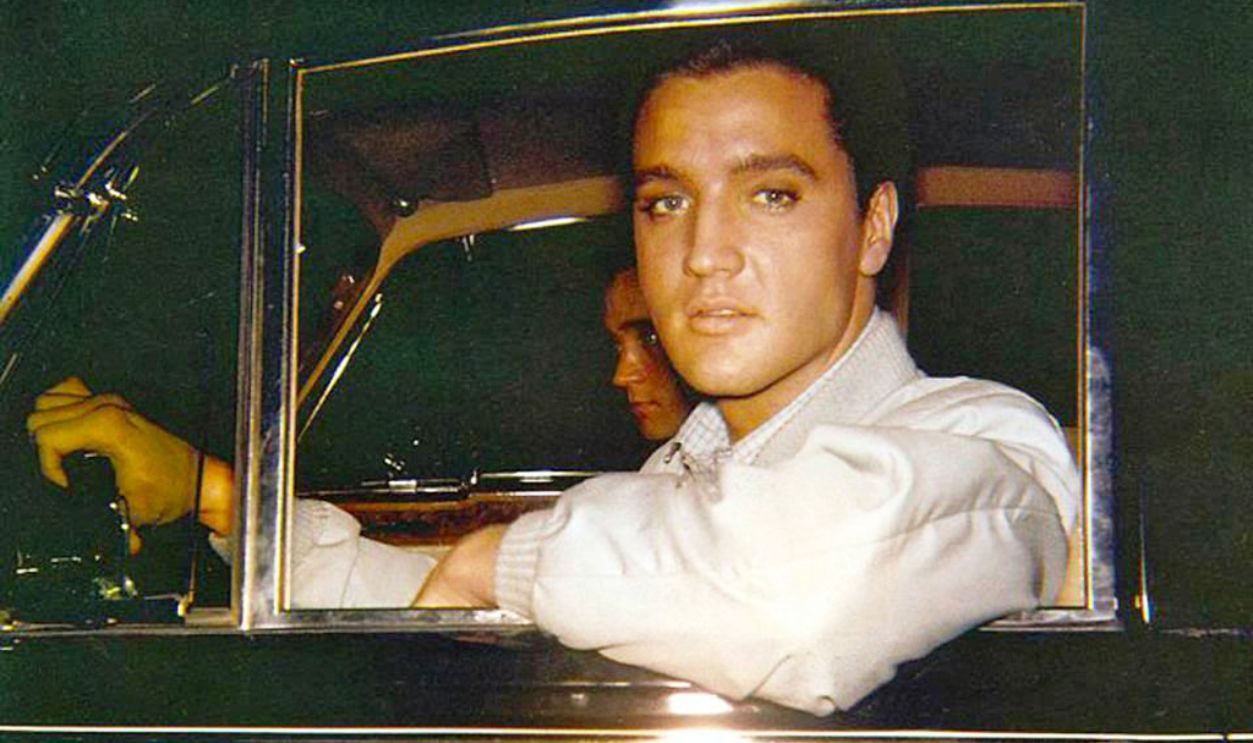
Thin A-Pillars
Classic cars with thin A-pillars were an essential aesthetic feature. They delivered better driver visibility and an open cabin feel. Contemporary car designs have thick pillars. This shift emphasizes structural integrity but sacrifices the lightness and unobstructed views that made vintage cars stand out.
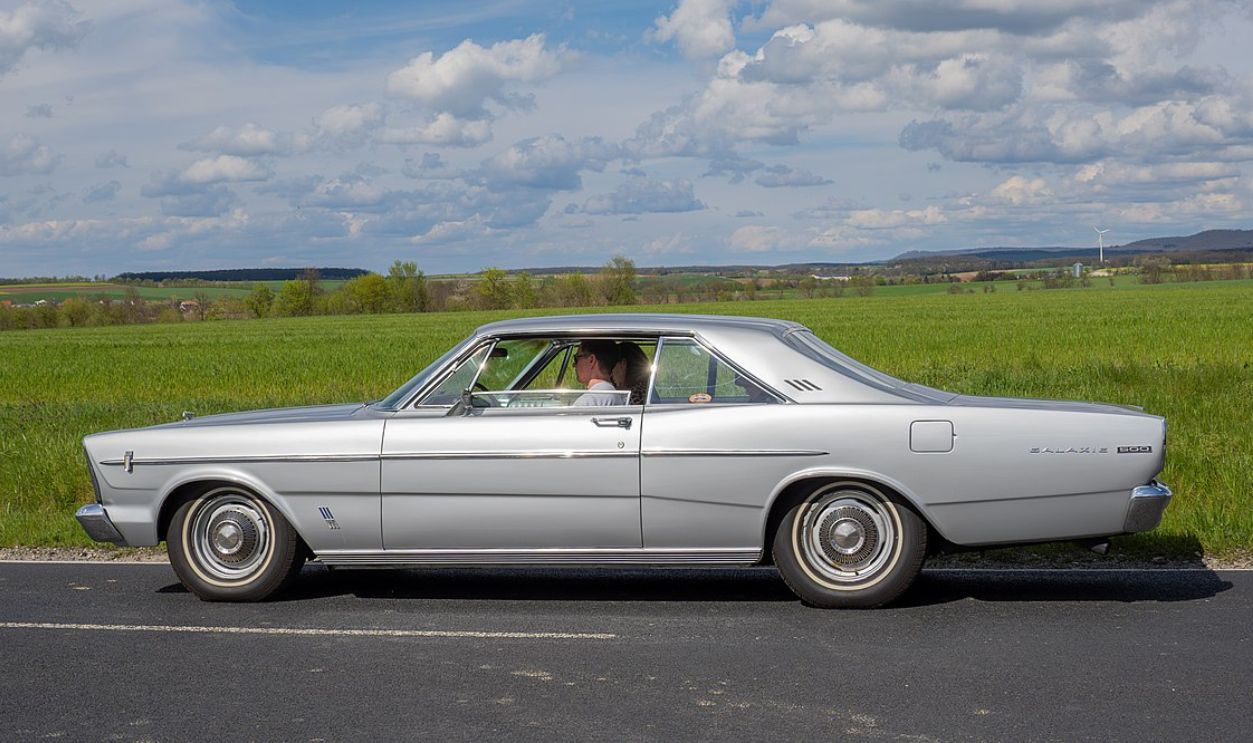 Ermell, CC BY-SA 4.0, Wikimedia Commons
Ermell, CC BY-SA 4.0, Wikimedia Commons
Tailfins
The 1960s cars had fin-tastic tailsfins. Tailfins were a defining feature of 1960s cars and added a futuristic and stylish design element. While tailfins were more subdued than their 1950s counterparts, they remained a symbol of innovation. The 1960 Cadillac Series 62 is a prime example of such.
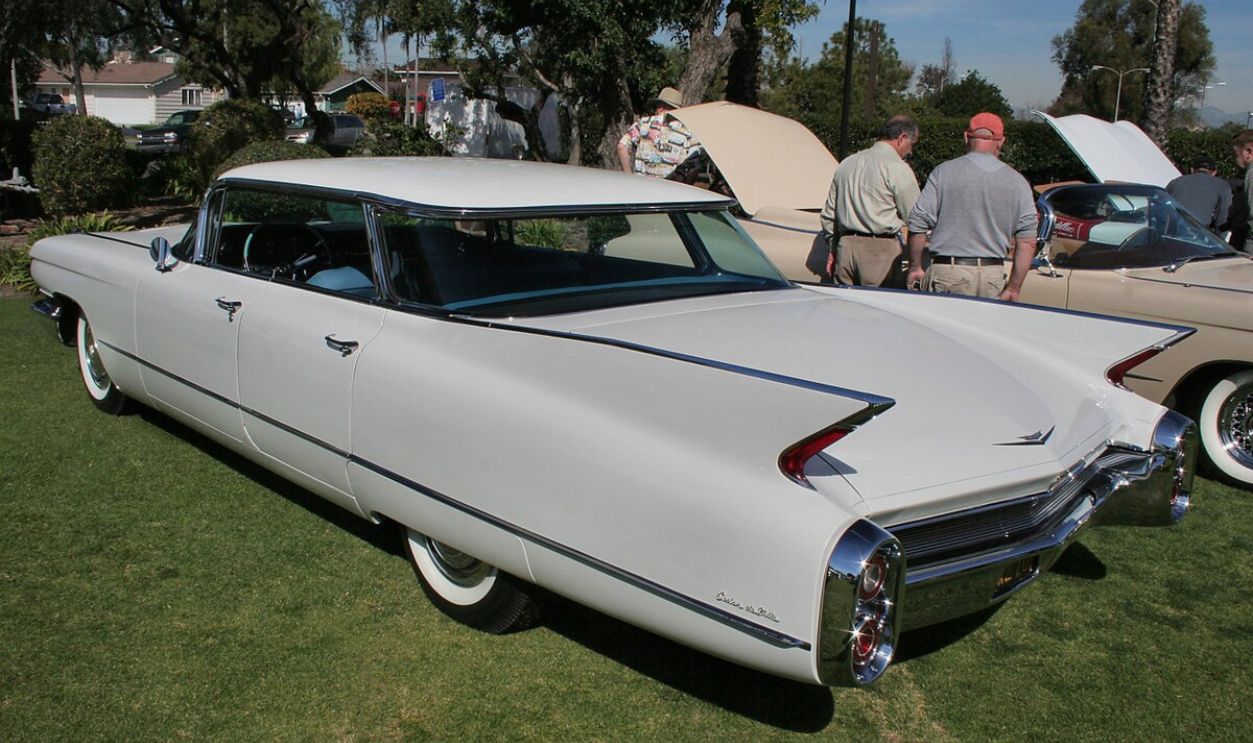 Rex Gray, CC BY 2.0, Wikimedia Commons
Rex Gray, CC BY 2.0, Wikimedia Commons
Pop-Up Headlights
Pop-up headlights were prevalent in ’60s cars and were a significant part of automotive styling features. As the name suggests, these headlights popped up and otherwise stayed hidden. Vehicles like the Chevrolet Corvette StingRay and Ford Thunderbird were popular because of their aerodynamic appearance.
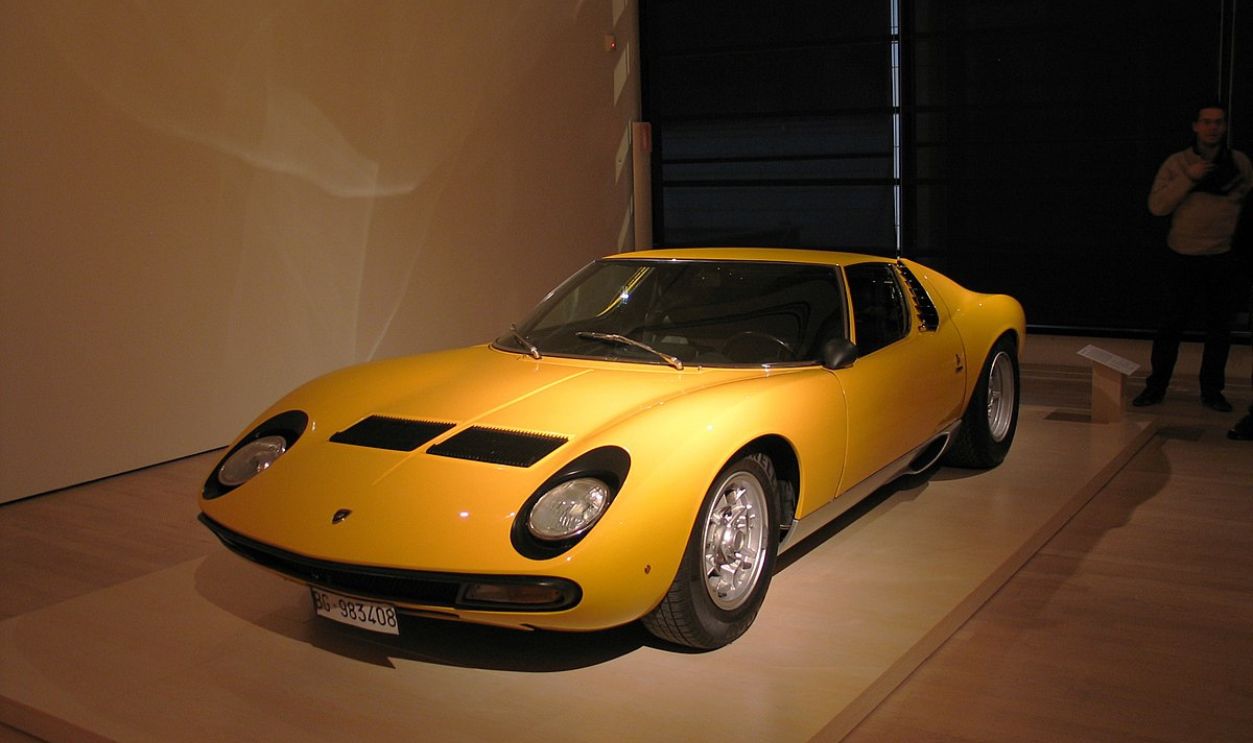 Davide Oliva, CC BY-SA 2.0, Wikimedia Commons
Davide Oliva, CC BY-SA 2.0, Wikimedia Commons
Hood Ornaments
Hood ornaments, to date, symbolize wealth. However, they served both aesthetic and functional purposes early on. They concealed radiator caps and added a touch of elegance to the vehicle. Modern cars have largely phased out hood ornaments due to evolving design preferences.
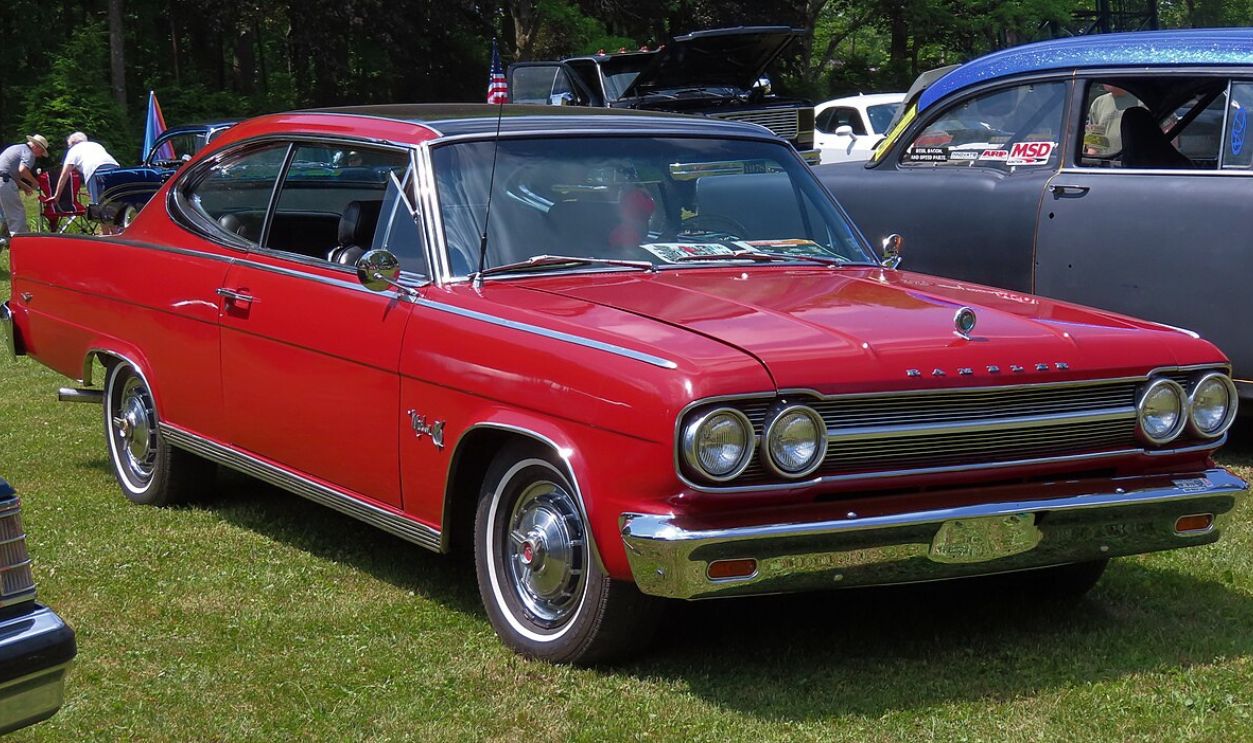 MercurySable99, CC BY-SA 4.0, Wikimedia Commons
MercurySable99, CC BY-SA 4.0, Wikimedia Commons
T-Tops And Targa Tops
A trademark of Porsche, this iconic feature of 1960s cars offers a semi-convertible body style with an open-air experience. Introduced by Porsche in 1966, the Targa top featured a removable roof panel with a roll bar, whereas T-Tops, debuting in 1968, had two removable panels.
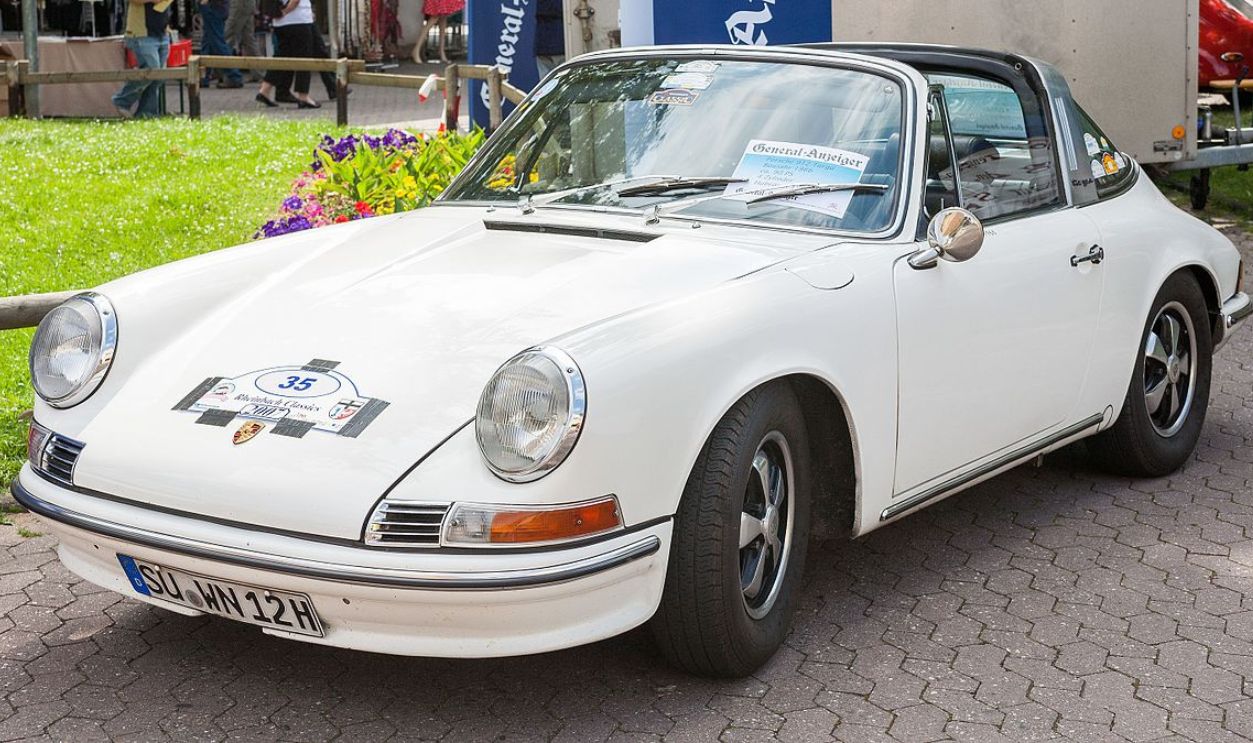 Eckhard Henkel, CC BY-SA 3.0 DE, Wikimedia Commons
Eckhard Henkel, CC BY-SA 3.0 DE, Wikimedia Commons
Vinyl Roofs
Originally designed to simulate the appearance of a convertible, this design soon transitioned into a stylish alternative to metal roofs. These vinyl coverings gained popularity in the 1960s and 1970s, with manufacturers experimenting with various shapes and textured materials.
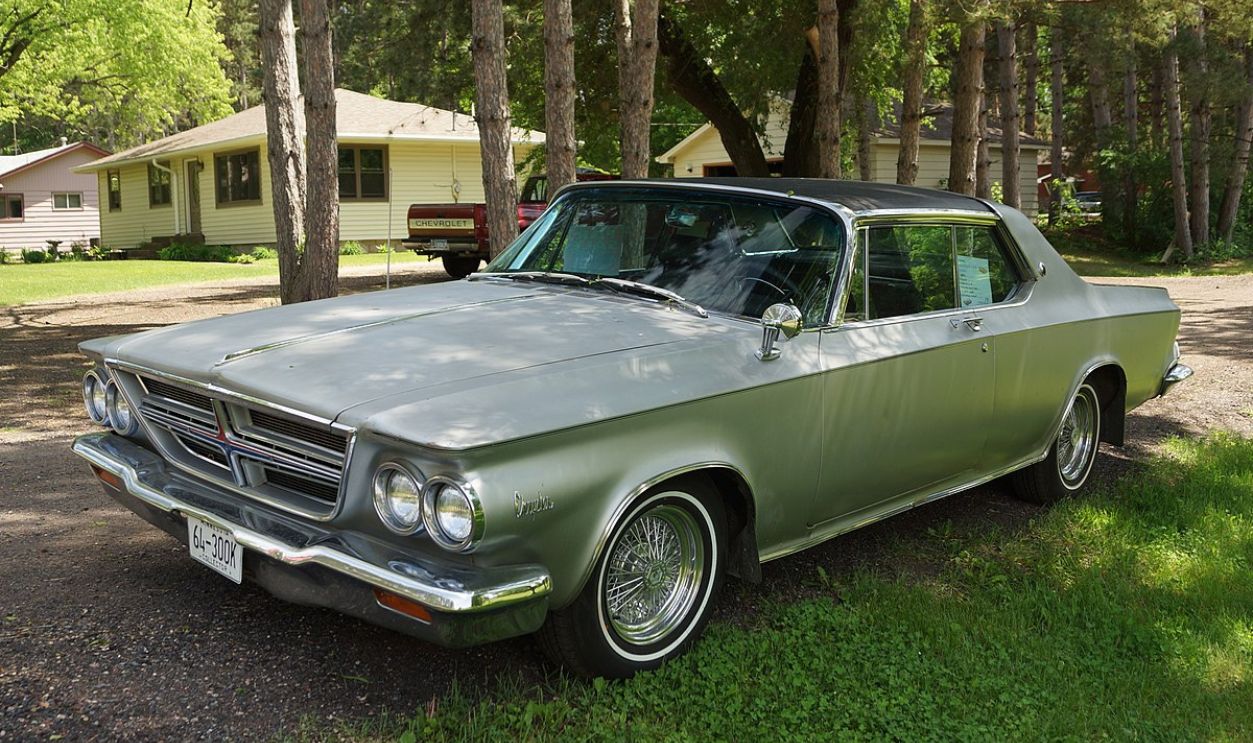 Greg Gjerdinge, CC BY 2.0, Wikimedia Commons
Greg Gjerdinge, CC BY 2.0, Wikimedia Commons
Vent Windows
Vent windows, also known as wing windows, were standard in the 1960s. It offered ventilation while also reducing wind noise. These small, triangular windows in front of the driver’s and passenger’s side windows could be adjusted to direct airflow into the car.
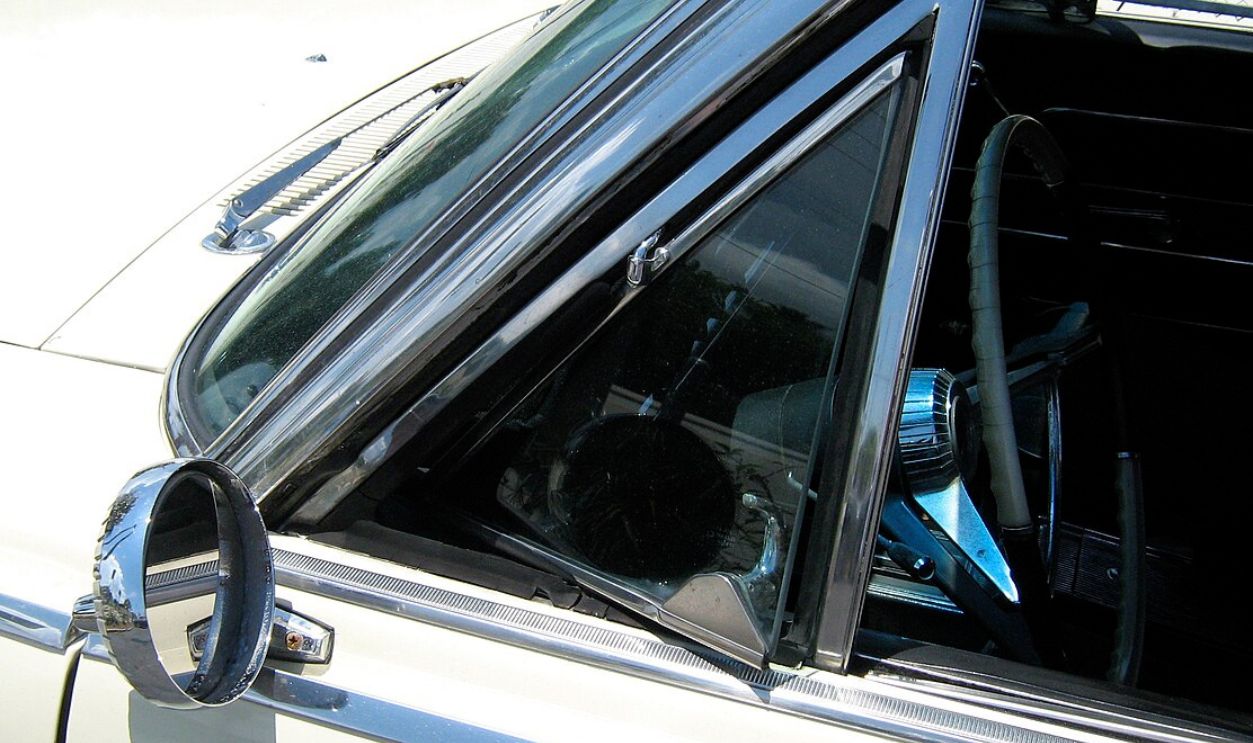 CZmarlin, Christopher Ziemnowicz, Wikimedia Commons
CZmarlin, Christopher Ziemnowicz, Wikimedia Commons
Bench Seats
A hallmark of 1960s cars, bench seats offered a spacious and comfortable interior. This design drew inspiration from horse-drawn carriages and intended to provide a “couch-like” seating arrangement that allowed for more passengers compared to the standard five-passenger vehicles of the time.
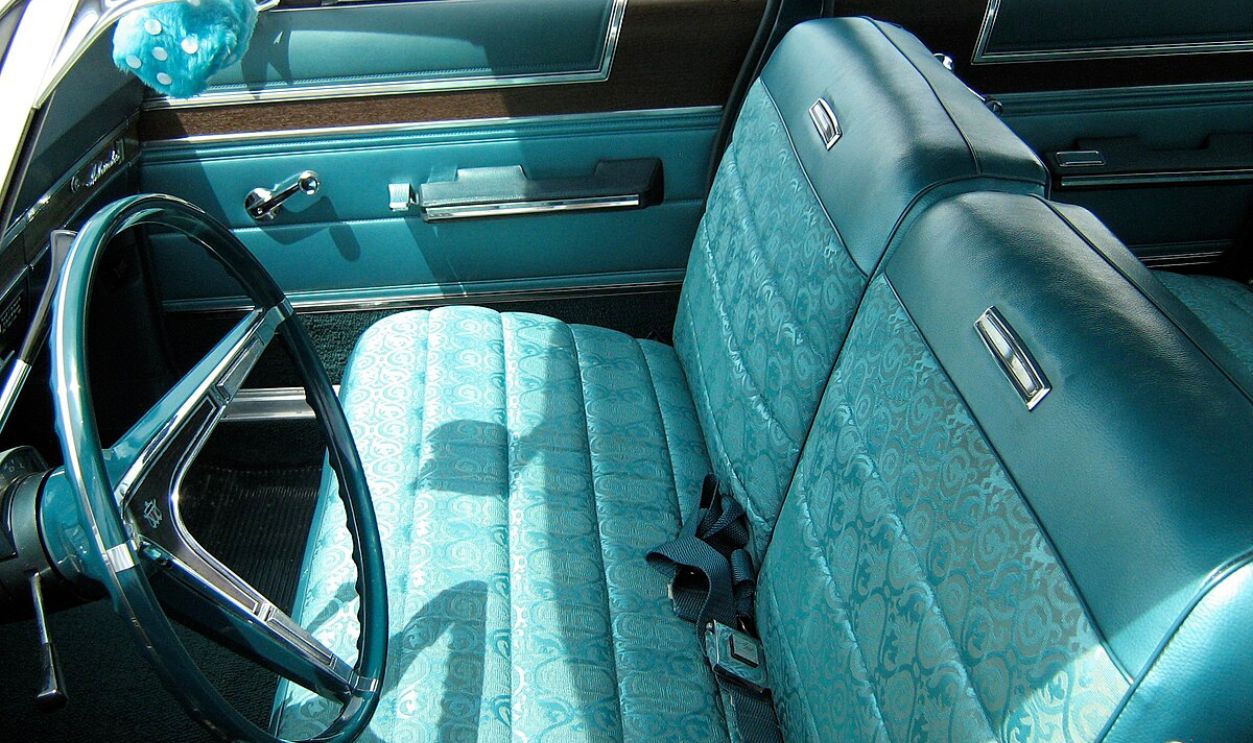 CZmarlin, Christopher Ziemnowicz, Wikimedia Commons
CZmarlin, Christopher Ziemnowicz, Wikimedia Commons
Retro Steering Wheels
At the time, steering wheels were crafted from materials like chrome, leather, etc. This was a way to show style and craftsmanship, and carmakers experimented with different added features. High-end models often had wooden steering wheels with chrome accents to complement the vehicle’s aesthetics.
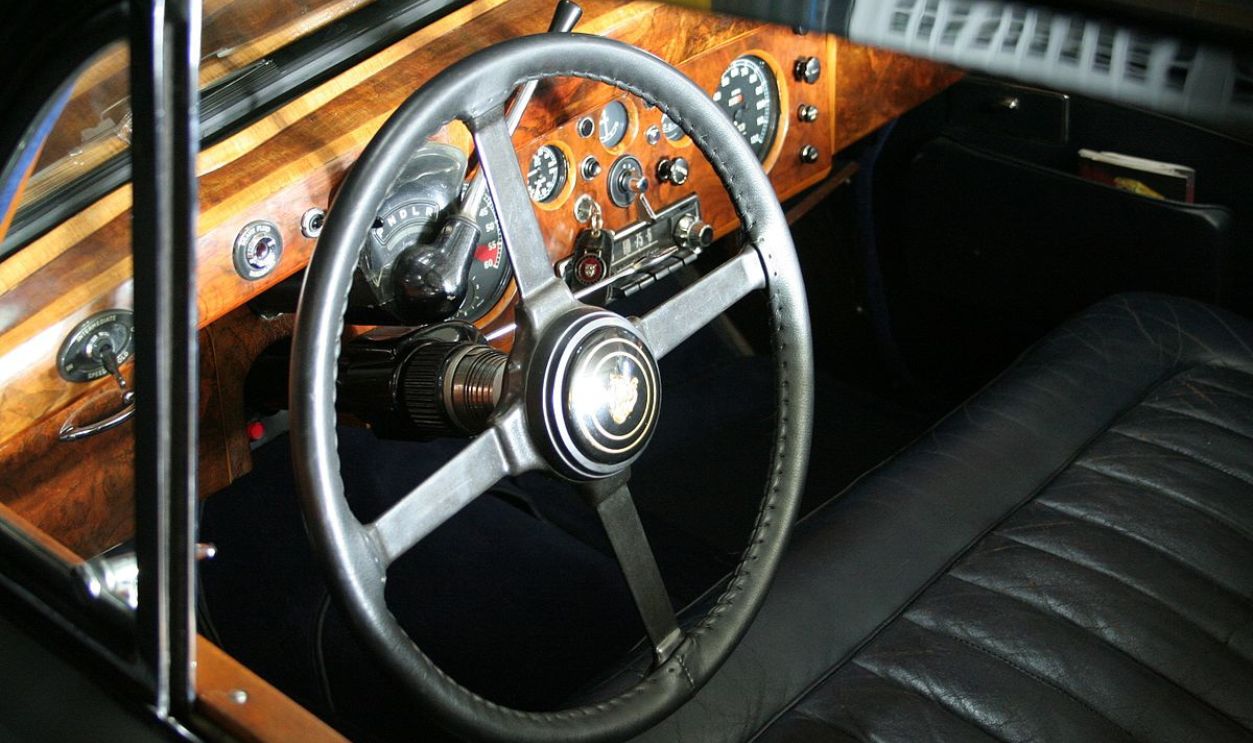 Smily256, CC BY 3.0, Wikimedia Commons
Smily256, CC BY 3.0, Wikimedia Commons
Analog Gauges
If you like classic cars, you probably know what analog gauges are. They’re a straightforward interface for monitoring speed and other metrics. These gauges, with their classic dials and needles, provide immediate, real-time information, much like digital gauges in modern cars.
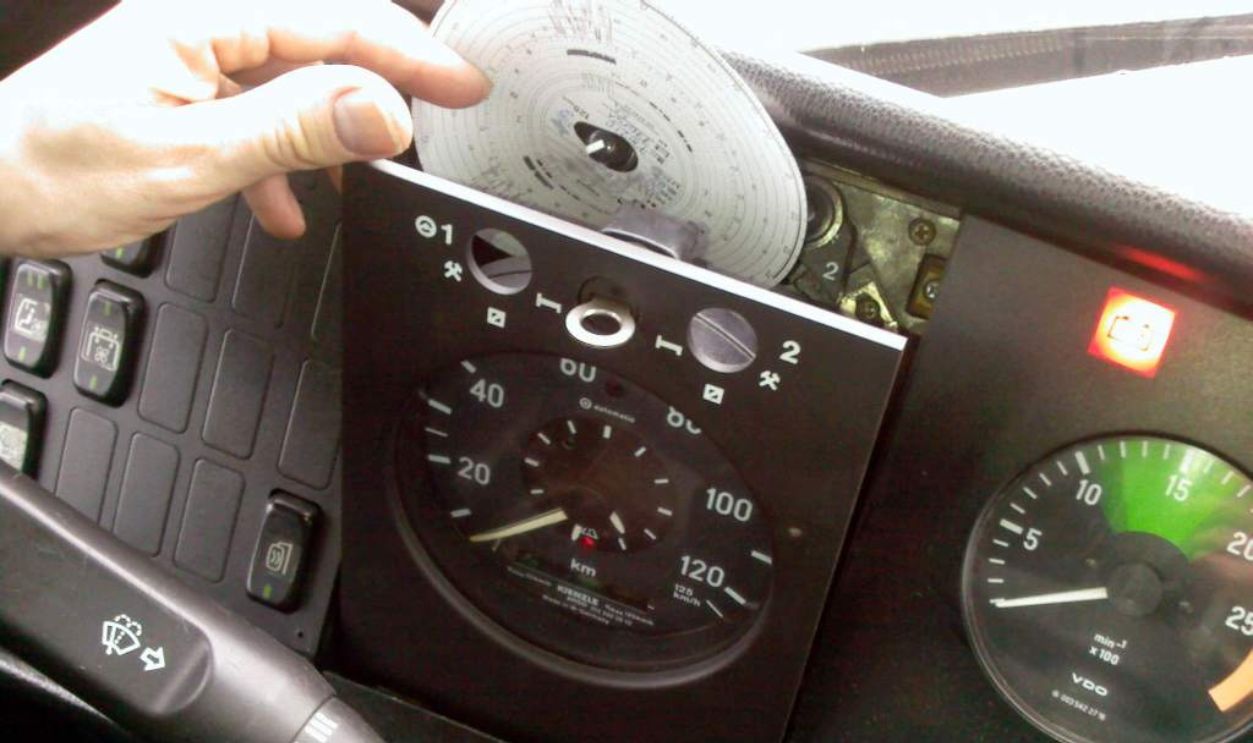 Paettchen (Patrick Seidler), CC BY-SA 3.0, Wikimedia Commons
Paettchen (Patrick Seidler), CC BY-SA 3.0, Wikimedia Commons
Velour Seats
In comparison to traditional upholstery, velour seats were a plush and comfortable alternative and were a symbol of luxury. They were soft, velvet-like fabrics that added a touch of sophistication to a car’s interior and made it a popular demand for high-end models of the era.
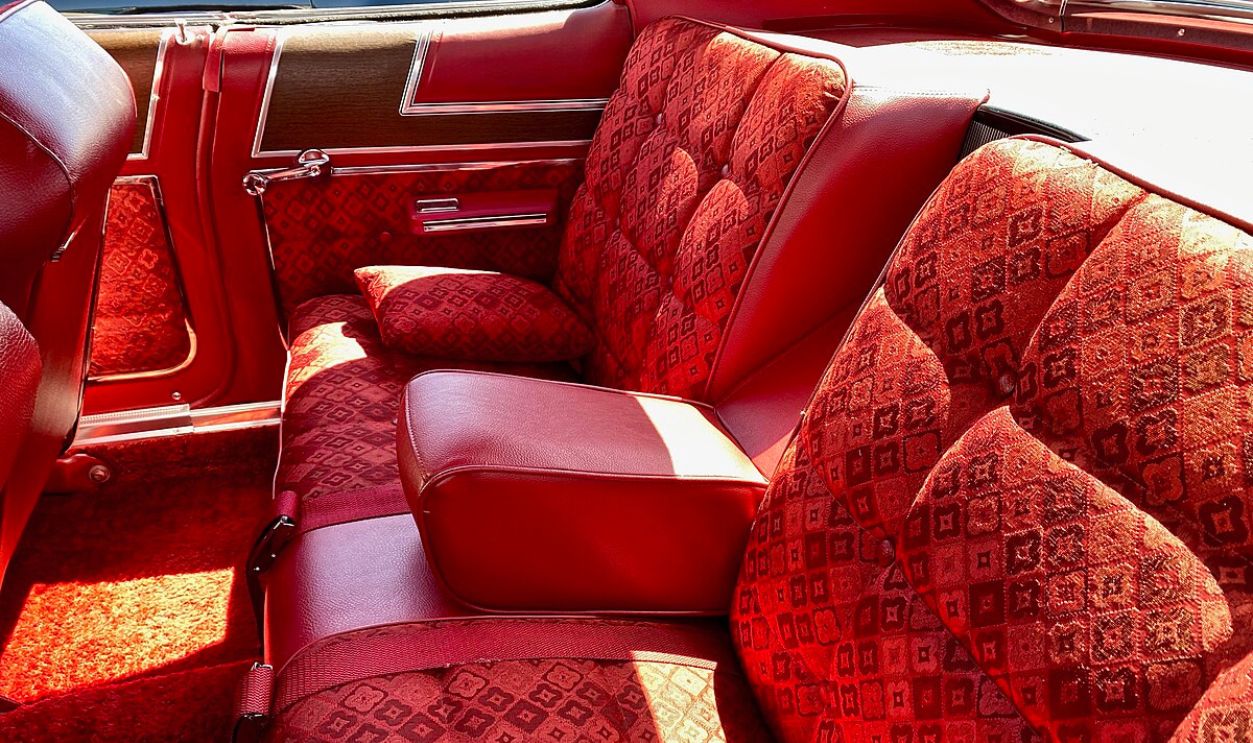 CZmarlin, Christopher Ziemnowicz, CC0, Wikimedia Commons
CZmarlin, Christopher Ziemnowicz, CC0, Wikimedia Commons
Cigarette Lighters
Lighters in cars mirrored cultural norms and the prevalence of smoking in the era. This component was often added to the dashboard or center console for the convenience of smokers. Over time, thanks to public awareness, as health considerations increased, this feature declined.
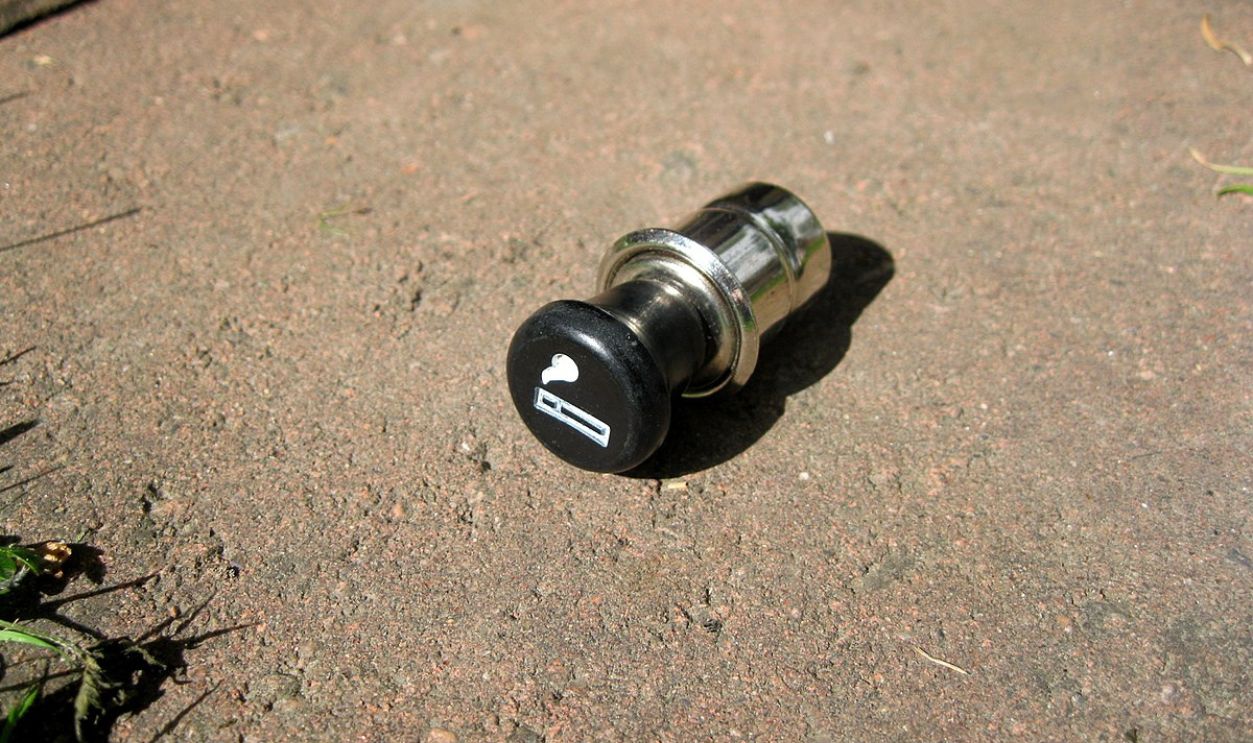 Santeri Viinamäki, CC BY 4.0, Wikimedia Commons
Santeri Viinamäki, CC BY 4.0, Wikimedia Commons
Column-Mounted Gear Shifts
These shifters were a practical design choice that freed up floor space, especially beneficial for models with bench seats. Known for their ease of use and space-saving benefits, they were commonly found in muscle cars. Eventually replaced by floor-mounted options, they remain a distinctive feature.
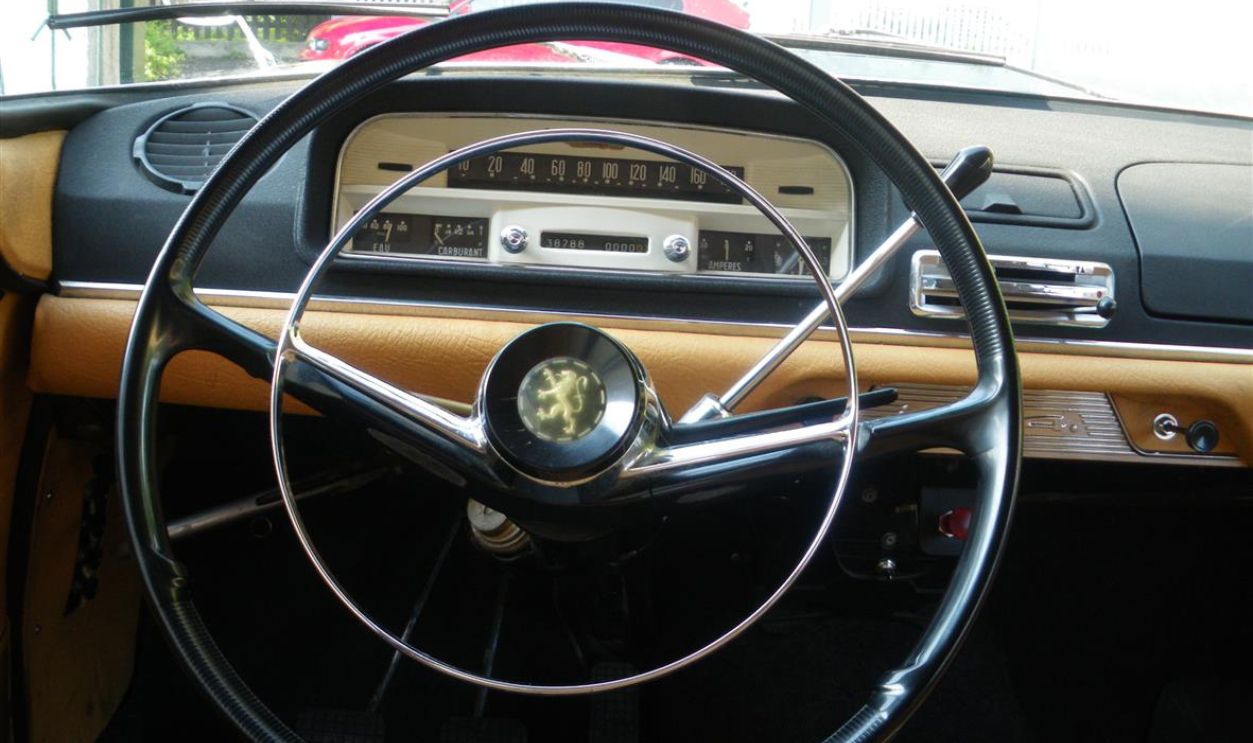 Amazon121, CC BY-SA 4.0, Wikimedia Commons
Amazon121, CC BY-SA 4.0, Wikimedia Commons
Manual Door Locks
In the 60s, manual door locks were the norm and required drivers to lock and open each door individually, either by using a key or manipulating the interior lock mechanism. Of course, eventually, it has changed to automated lock systems in almost all modern vehicles in the market.
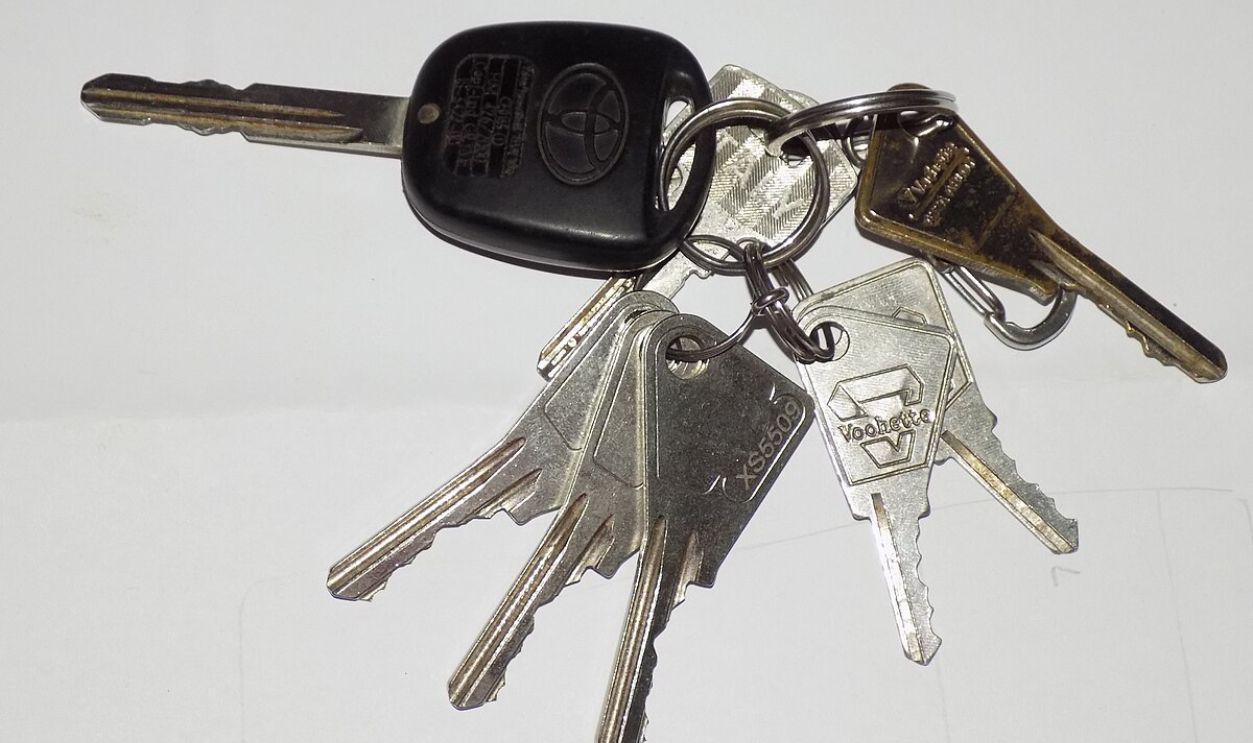 ADAMBITA, CC BY-SA 4.0, Wikimedia Commons
ADAMBITA, CC BY-SA 4.0, Wikimedia Commons
Manual Steering
Manual car steering requires drivers to exert more effort, especially at low speeds. Contemporary cars are primarily based on power steering gear, which, unlike manual steering, doesn’t rely on the driver’s strength to turn the wheel. This often leads to increased driver fatigue and makes it challenging at times.
Manual Windows
Manually rolling down windows was the “jam” back then. They were standardly found in all cars and required the operator to hand-crank the window up or down as needed. It required both time and effort compared to the luxury of a button that we have now to operate car windows.
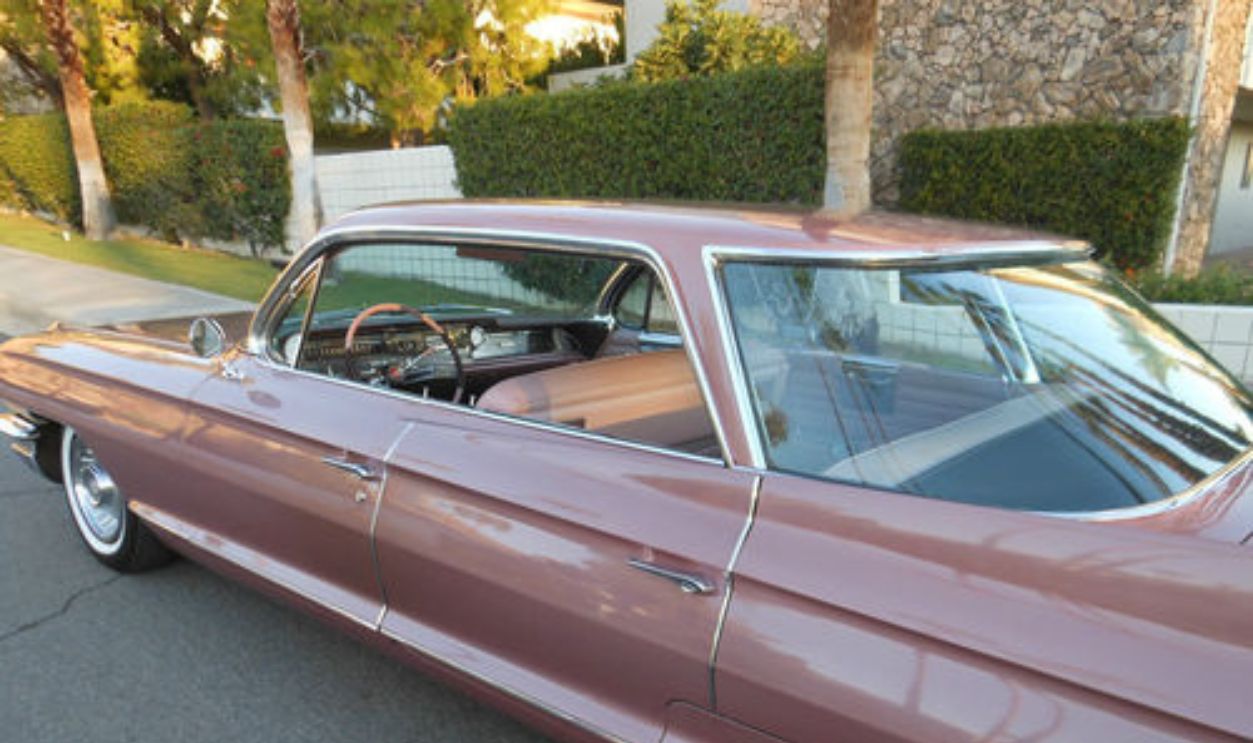 That Hartford Guy, CC BY-SA 2.0, Wikimedia Commons
That Hartford Guy, CC BY-SA 2.0, Wikimedia Commons
AM Radio
These AM radios were the buzz and the primary source of entertainment on long road trips. They used amplitude to broadcast music, news, and so on. Though the sound quality could sometimes be scratchy or prone to interference in remote areas, nonetheless, they were much appreciated at the time.
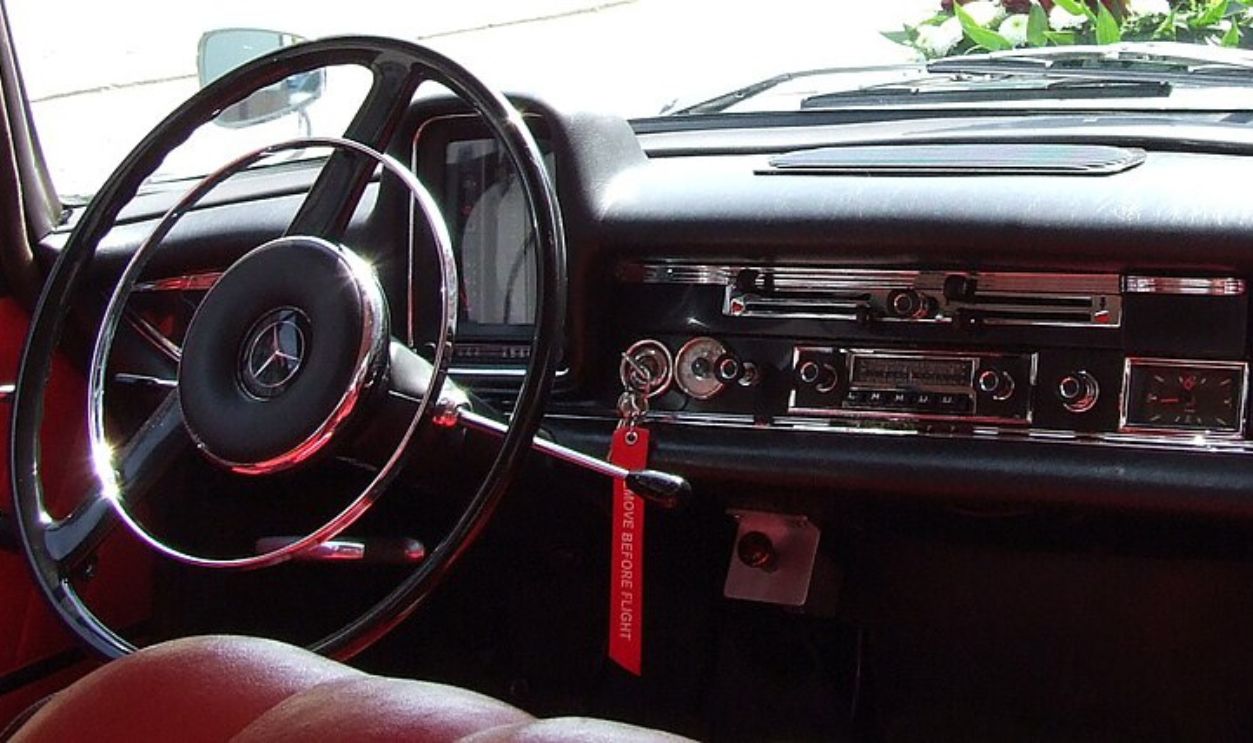 Jo664, CC BY 3.0, Wikimedia Commons
Jo664, CC BY 3.0, Wikimedia Commons
8-Track Players
A significant breakthrough everyone relished was the revolutionary 8-track player. Introduced to the world by Ford Motor Company in 1965, it allowed drivers to enjoy continuous music without manual tape changes. These undoubtedly became very popular, with many variations later on.
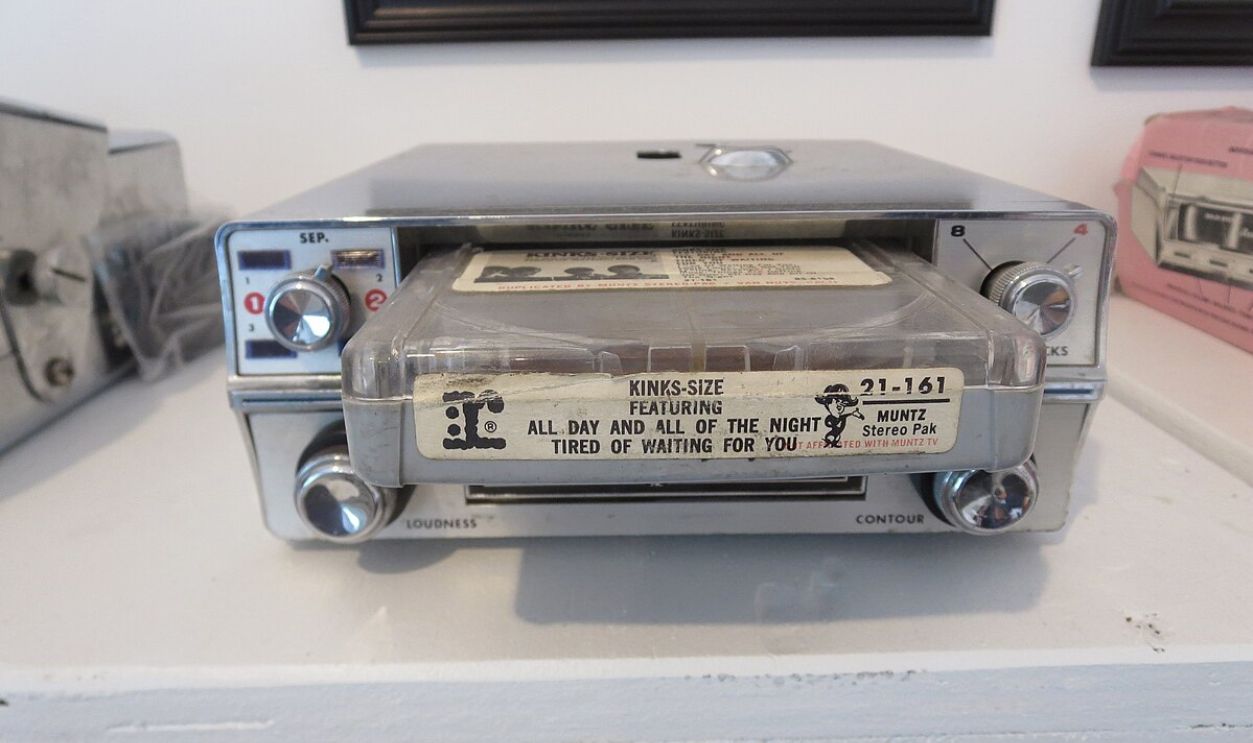 Leonard Nevarez, CC BY 2.0, Wikimedia Commons
Leonard Nevarez, CC BY 2.0, Wikimedia Commons
Manual Transmissions
Manual Transmissions had gearboxes that required coordinating the clutch pedal and a gear shifter. Therefore, driving smoothly needed patience and practice. Unlike automatic transmissions in cars nowadays, these offer better fuel efficiency and control
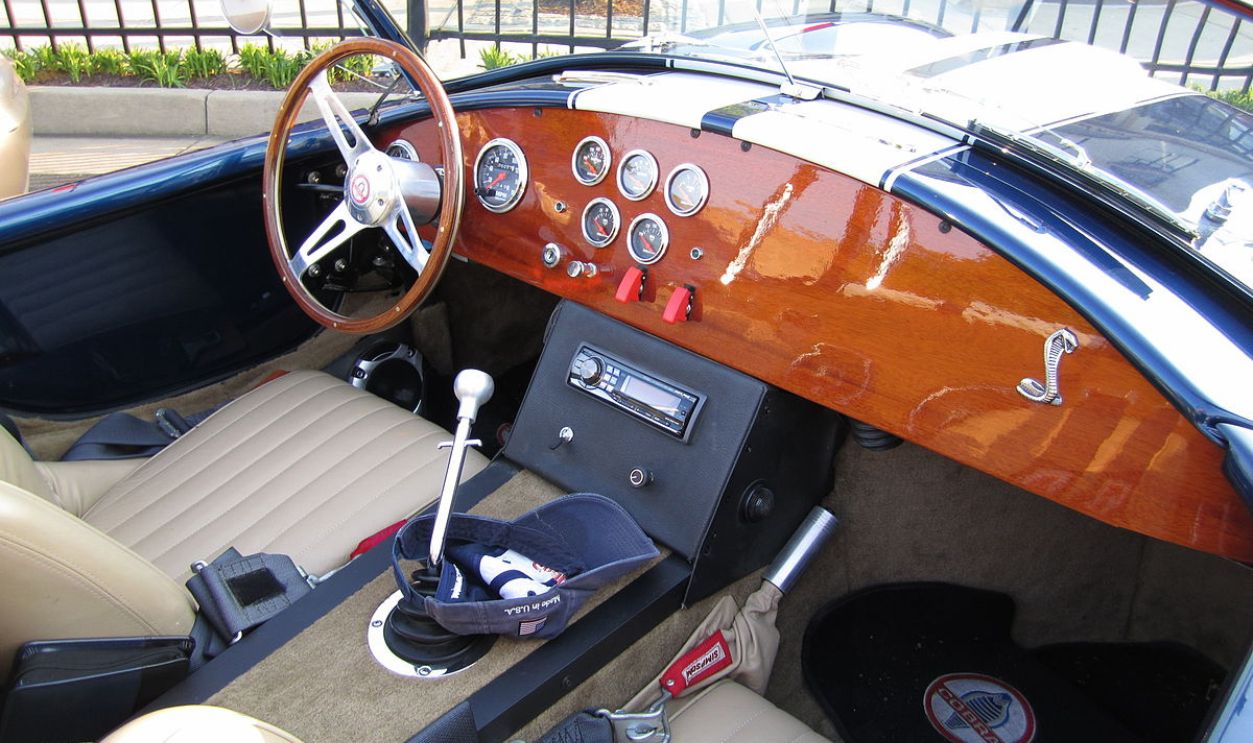 Eli Christman, CC BY 2.0, Wikimedia Commons
Eli Christman, CC BY 2.0, Wikimedia Commons
Manual Brakes
In the 1960s, cars had manual breaks, and braking was a demanding task as it required the driver to exert significant pedal force to stop the car. On the other hand, it was very easy to maintain as it used simple mechanics, unlike contemporary cars that require a higher maintenance cost and expert personnel.
Non-Anti-Lock Brakes
This type of brake requires drivers to manually modulate the braking force to prevent the wheels from locking in hard braking or slippery surfaces, leading to skidding and reduced steering controls. The development of anti-lock braking systems (ABS) began in the late 1960s, with Bosch initiating in-house predevelopment in 1969.
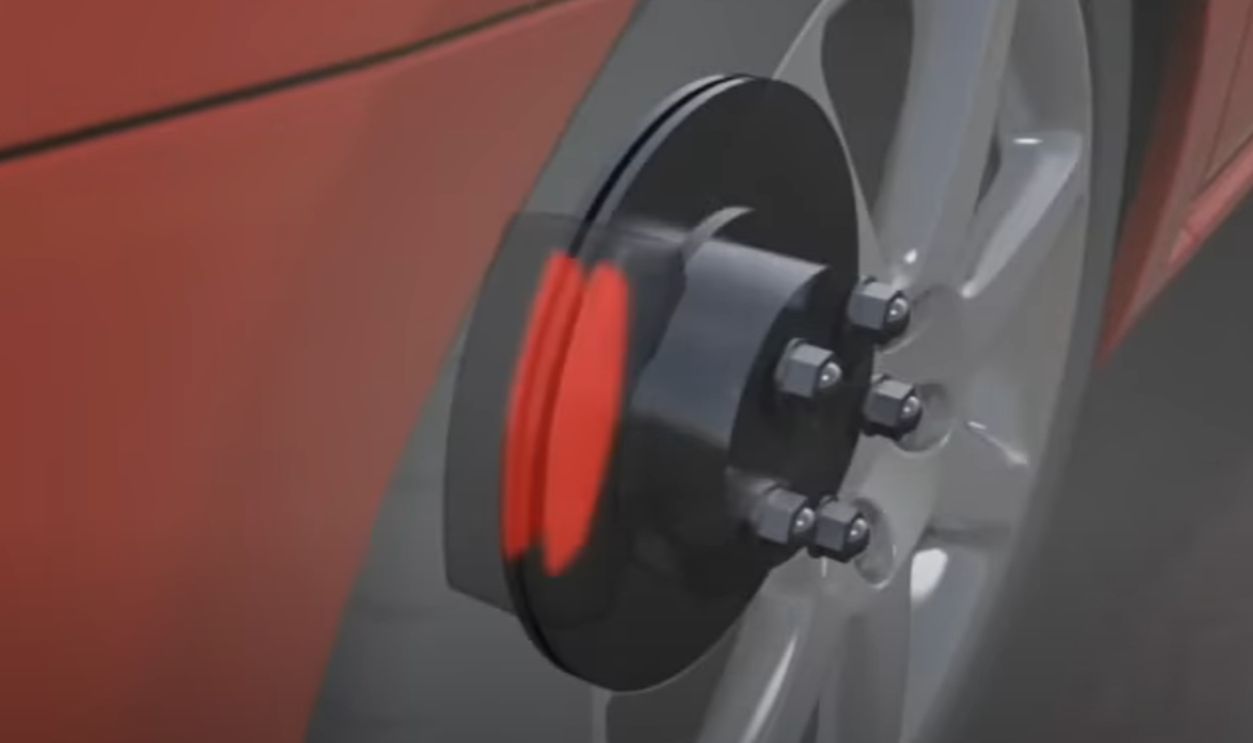 How ABS (Anti-Lock Brakes) Work by Rambling Adventures
How ABS (Anti-Lock Brakes) Work by Rambling Adventures
Floor-Mounted High Beam Switch
Most ’60s vehicles had floor-mounted switches for toggling high-beam headlights. This allowed drivers to change between low and high beam using their left foot while keeping their hands on the wheels. It remained for five decades after its introduction before manufacturers transitioned the control to the steering column.
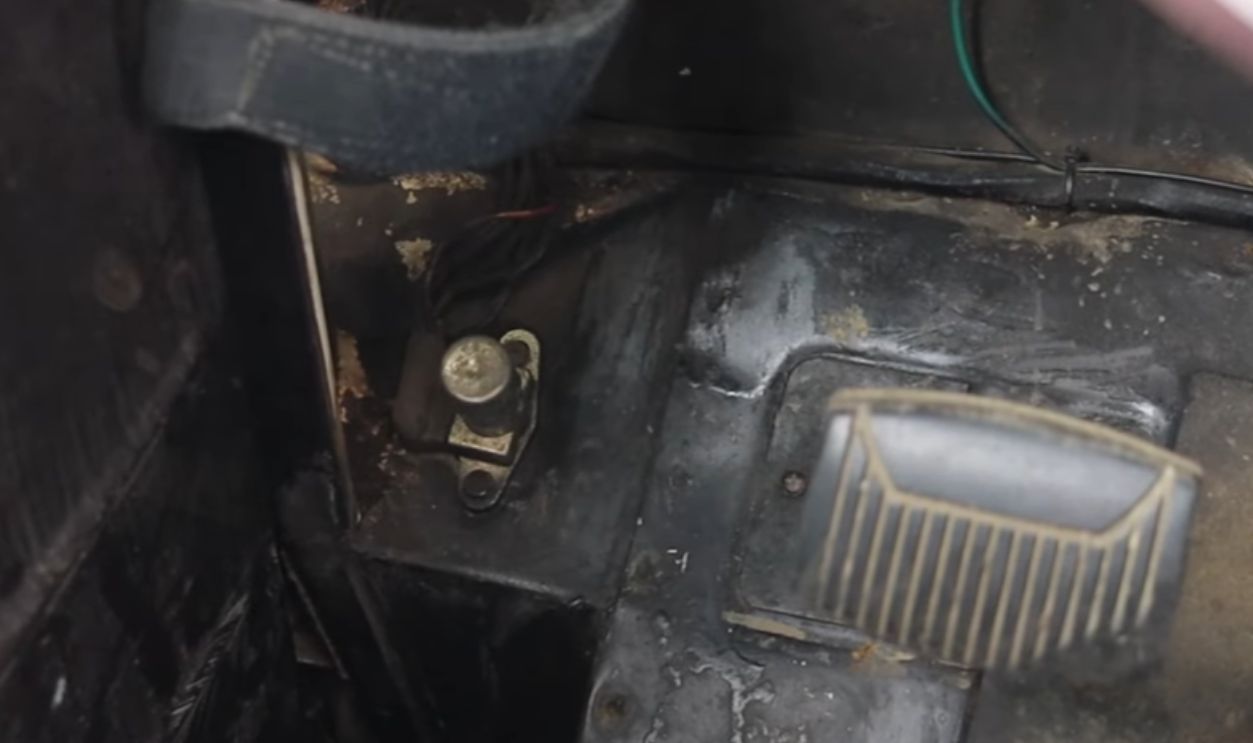 Floor-Mounted High Beams - Why They Were Invented & Why They Went Away! By Shooting Cars
Floor-Mounted High Beams - Why They Were Invented & Why They Went Away! By Shooting Cars
Drum Brakes
These versions of brakes work by using shoes or pads to press against a spinning part called the brake drum to create friction to stop the vehicle. These were splendid with adequate stopping power but were prone to brake fade under heavy use due to heat buildup.
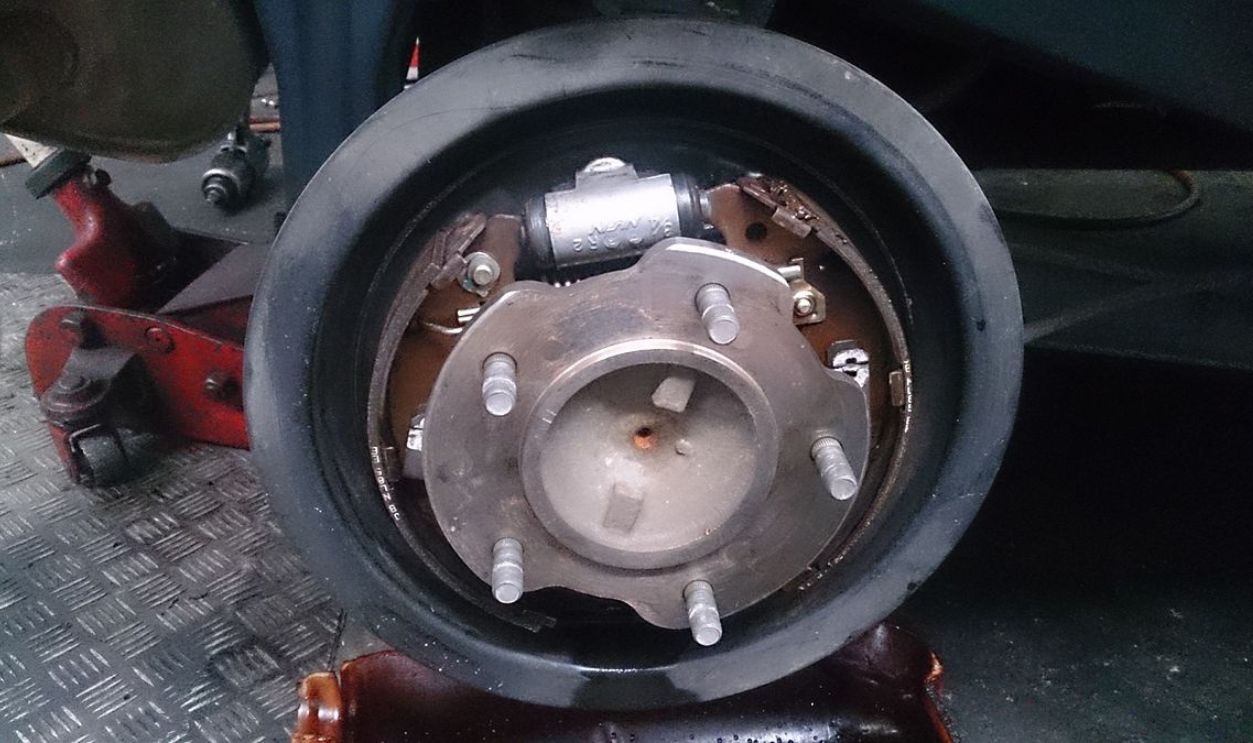 ProjectManhattan, CC BY-SA 3.0, Wikimedia Commons
ProjectManhattan, CC BY-SA 3.0, Wikimedia Commons
Physical Handbrakes
Physical handbrakes, also called parking brakes, were manually operated levers connected to the rear brakes via cables. This allowed drivers to secure parked vehicles and was an emergency braking mechanism. With advancements in automotive technology, electronic parking brakes have replaced manual handbrakes.
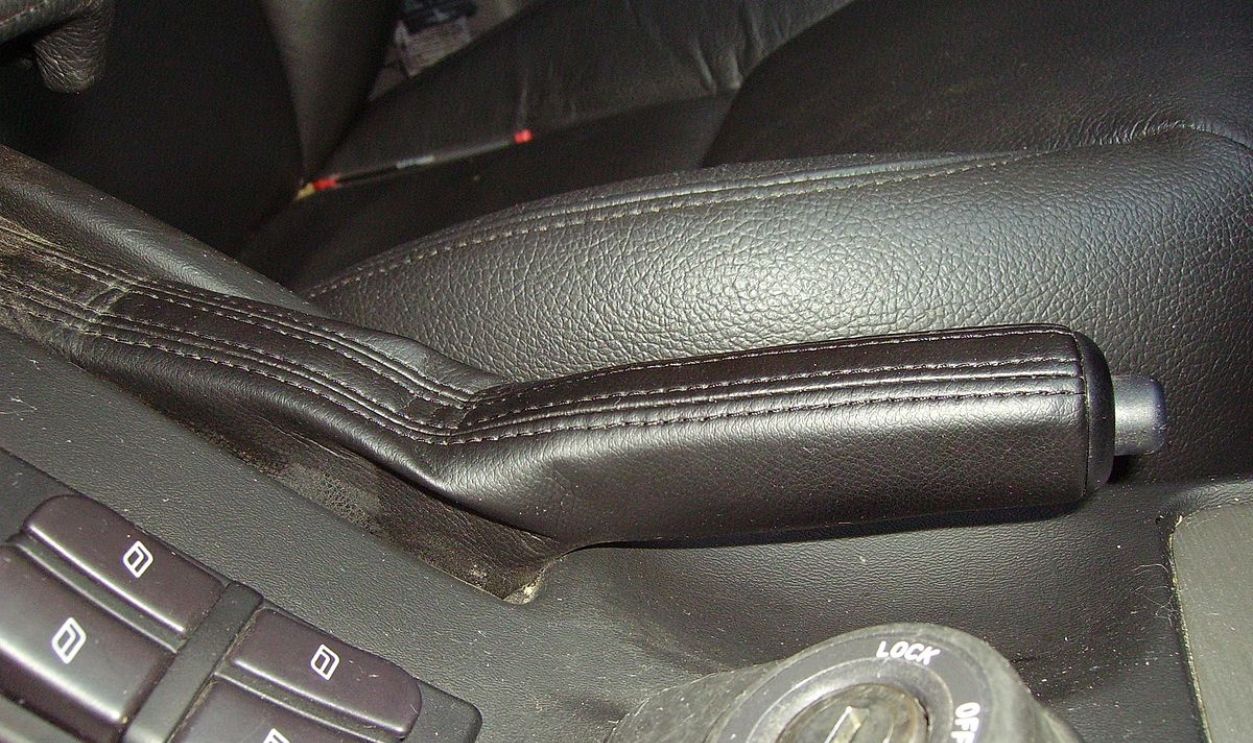 Ballista, CC BY-SA 3.0, Wikimedia Commons
Ballista, CC BY-SA 3.0, Wikimedia Commons
Carburetors
Carburetors were essential components of automotive engines and were responsible for mixing air and fuel for combustion. Though carburetors provided better fuel management, the downside was that they required regular maintenance and precise tuning.
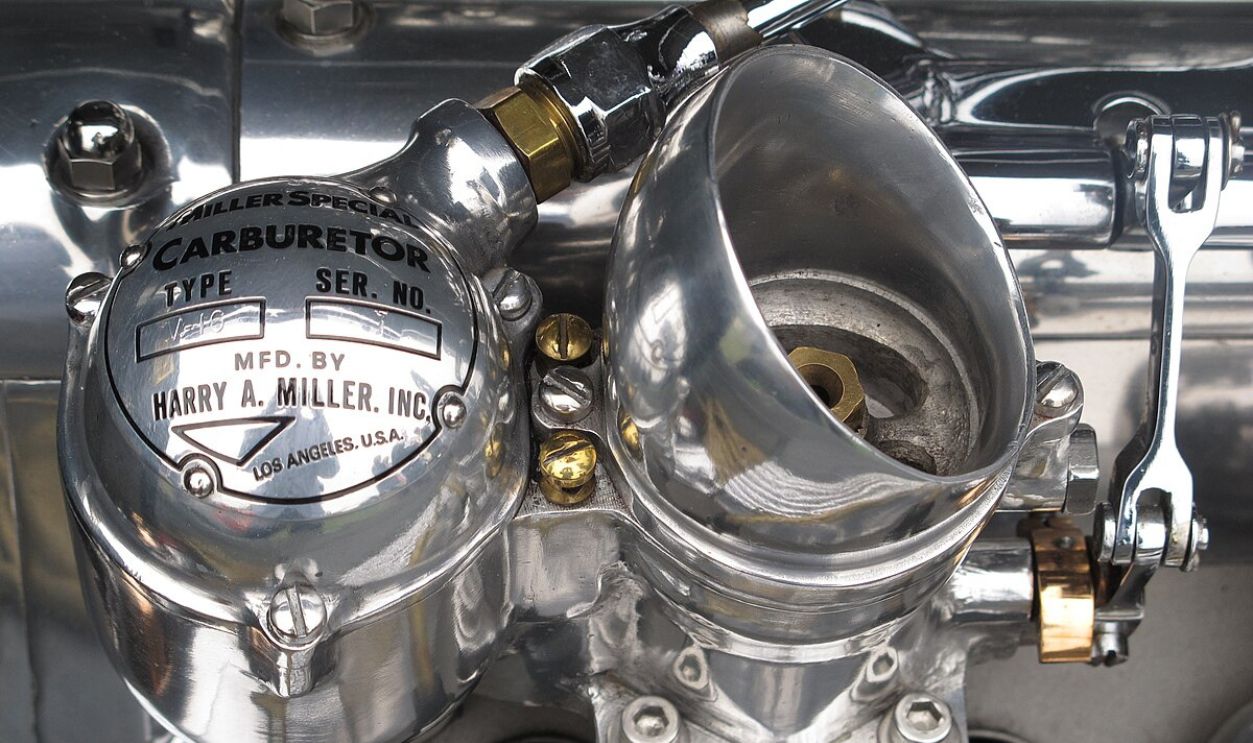 LarryStevens, CC0, Wikimedia Commons
LarryStevens, CC0, Wikimedia Commons
Choke
The ’60s carbureted vehicles utilized chokes to regulate the air-fuel mixture during engine startup. Initially, manual chokes were more common and required drivers to adjust the choke via a lever or knob. Over time, automatic chokes that used thermostatic coils or electric mechanisms to adjust the choke plate became more common.
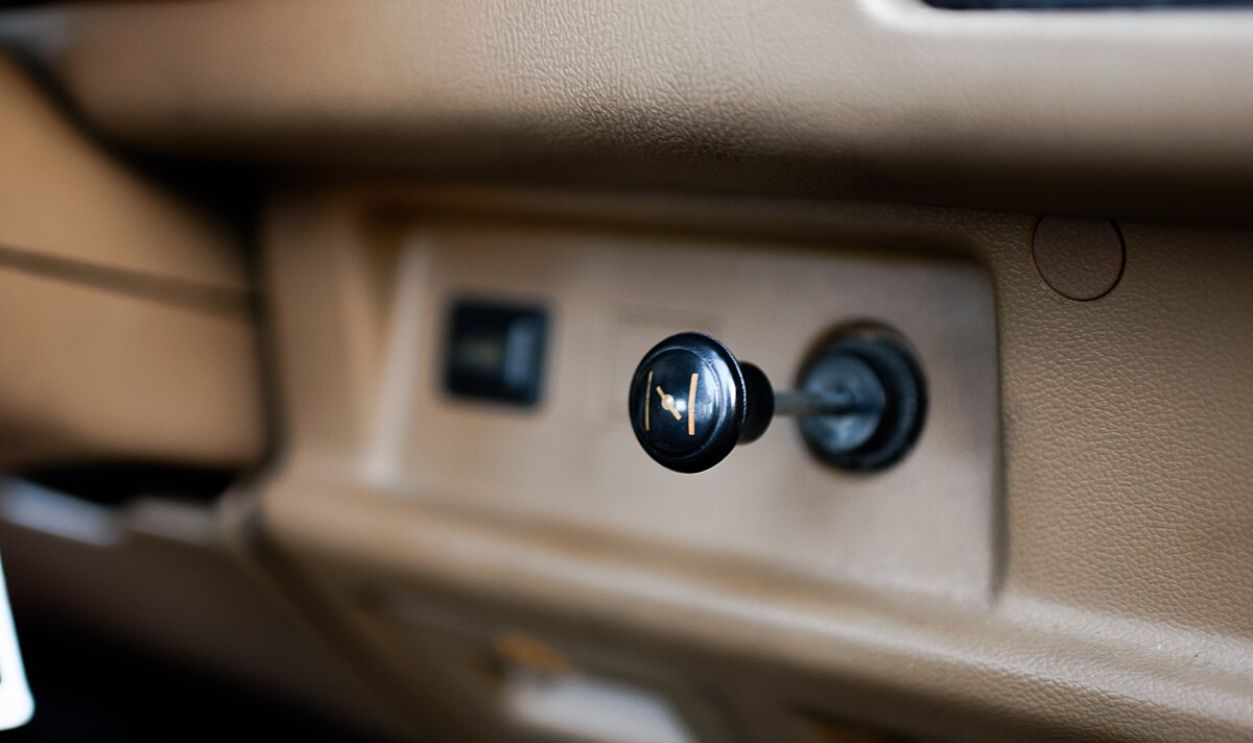 SealyPhoto, CC BY-SA 4.0, Wikimedia Commons
SealyPhoto, CC BY-SA 4.0, Wikimedia Commons
Full-Size Spare Tires
It was very common for cars to have an extra full-size tire identical to the main tires for replacements in case of emergencies. These tires were stored in the trunk and offered peace of mind during road trips, especially in an era when roadside assistance was less common.
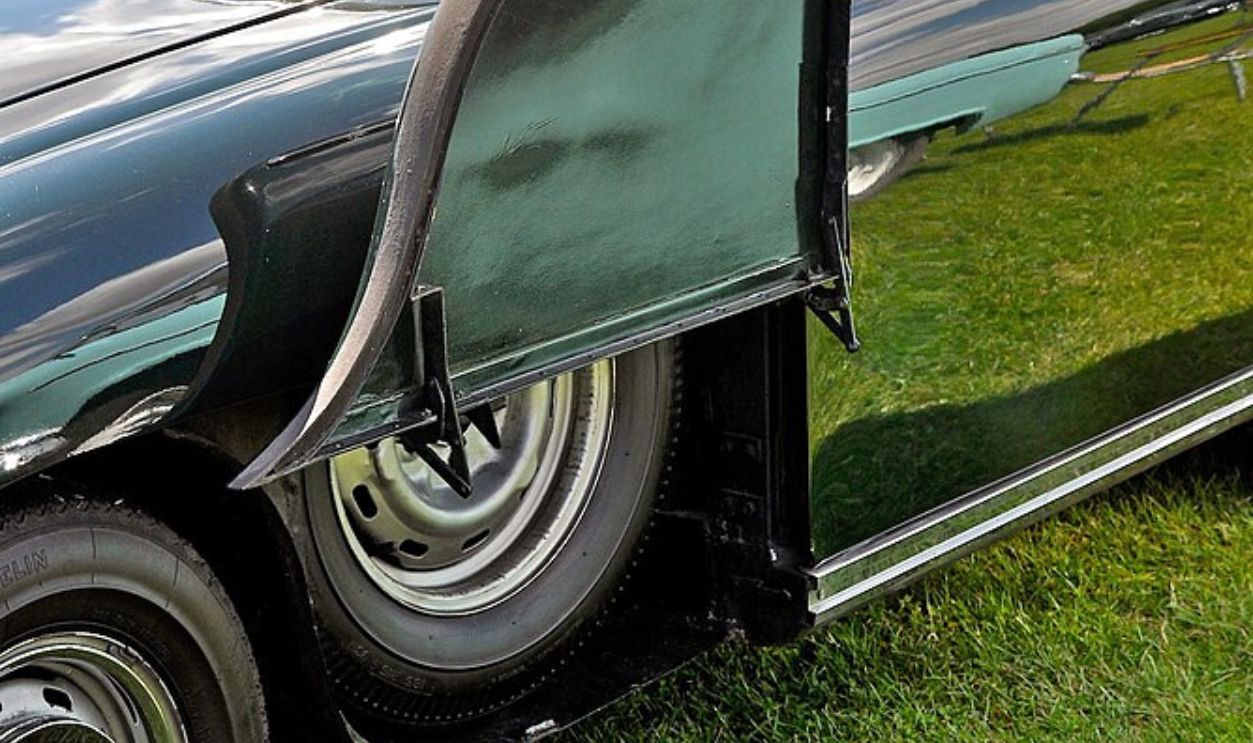 Martin Pettitt, Mr.choppers, CC BY 2.0, Wikimedia Commons
Martin Pettitt, Mr.choppers, CC BY 2.0, Wikimedia Commons
Chrome Accents
As an automotive design feature, chrome accents were used to make cars look more stylish and elegant. Thus, carmakers extensively used chrome on bumpers, window trims, and so on. The reflective quality of chrome gave it a luxurious look while also symbolizing optimism.
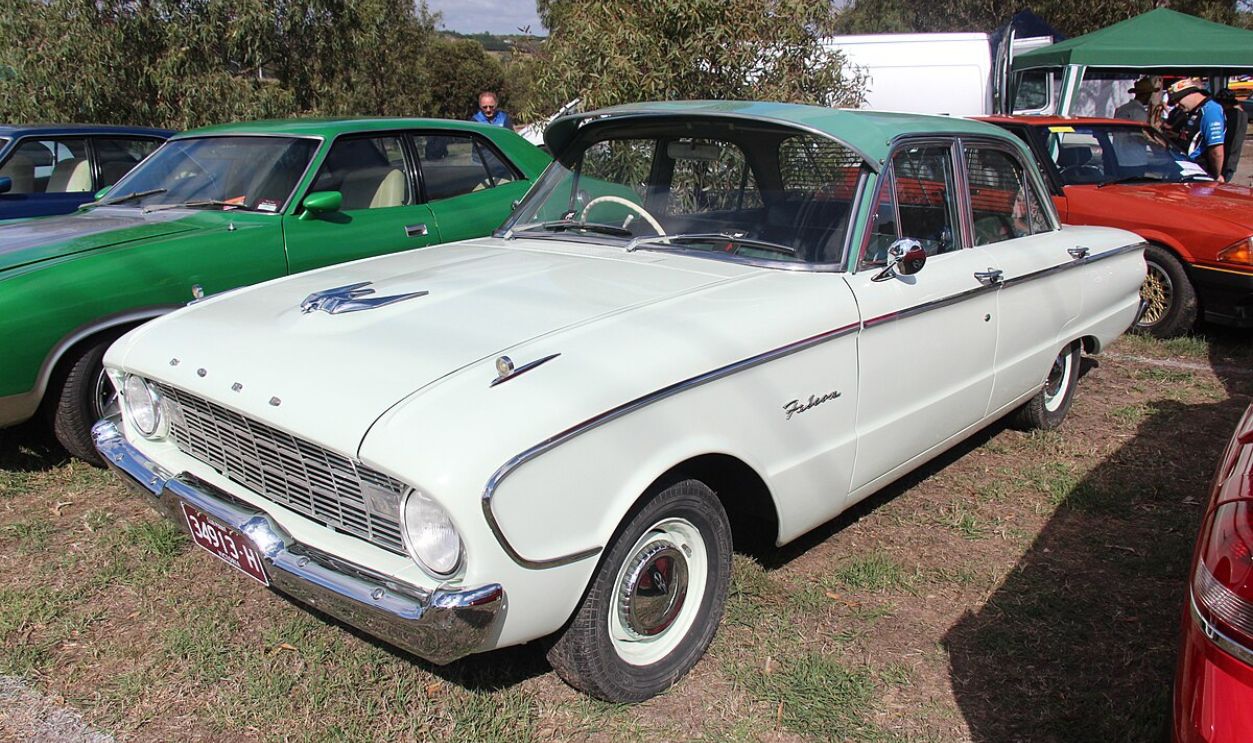 Sicnag, CC BY 2.0, Wikimedia Commons
Sicnag, CC BY 2.0, Wikimedia Commons
Onboard Record Players
There can never be enough songs, right? Onboard record players like Highway Hi-Fi gave drivers the liberty to enjoy vinyl records while on the road. It was mounted under the dashboard and had shock-absorbing mechanisms. But it soon lost favor as these systems were prone to malfunctions and were expensive.
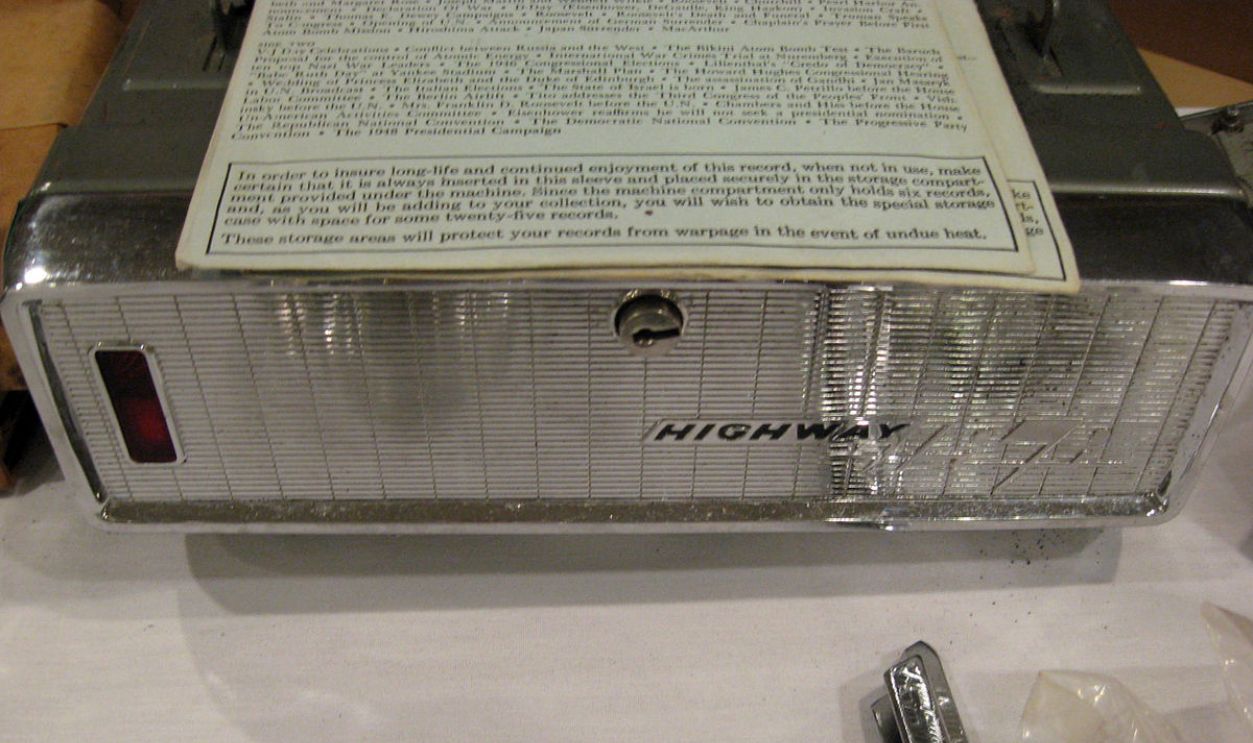 Bill McChesney, CC BY 2.0, Wikimedia Commons
Bill McChesney, CC BY 2.0, Wikimedia Commons
Glove Box Mini Bars
Back then, minibars were a feature offered among luxury high-end cars to provide a compact in-car drinking experience. These were designed to deliver convenience and luxury to passengers. Vehicles like the 1957 Cadillac Eldorado Brougham included a minibar in its glove compartment.
Push-Button Transmissions
A shift away from the traditional gear levers, push-button transmissions were a novel approach. Unlike conventional gearsticks, drivers could select gears with the push of a button. Though it had a futuristic appeal with its conveniences, it was later discontinued as it was prone to malfunction.
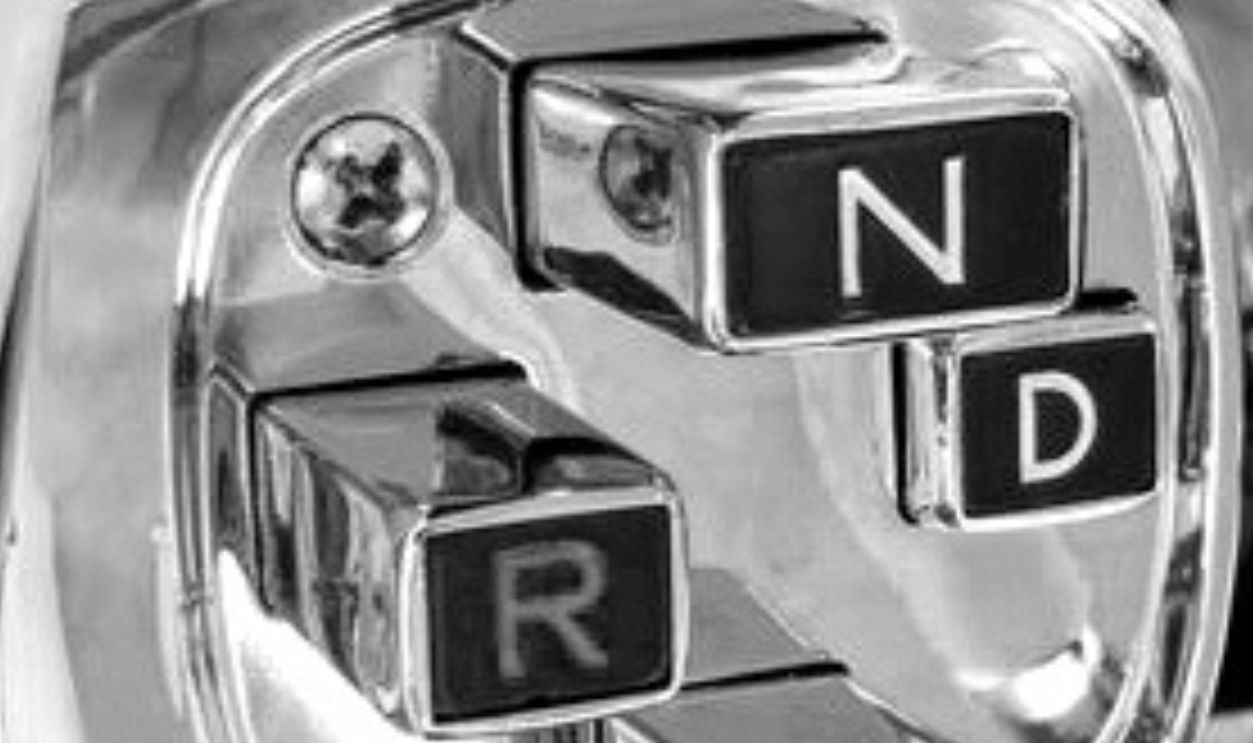 Historianbuff, CC BY-SA 3.0, Wikimedia Commons
Historianbuff, CC BY-SA 3.0, Wikimedia Commons
Wraparound Windshields
These types of windshields were a distinctive feature of many 1960s cars, with a futuristic look and practical advantages. Unlike traditional windshields, these are curved around the sides of the car to enhance visibility and reduce blind spots while creating a more open feel.
Hardtop Convertibles
Hardtop convertibles were a popular automotive innovation that was prevalent through the 60s. These vehicles combined the best features of both hardtop and convertible designs to achieve the open-air experience of a convertible and the secure feel of a hardtop.
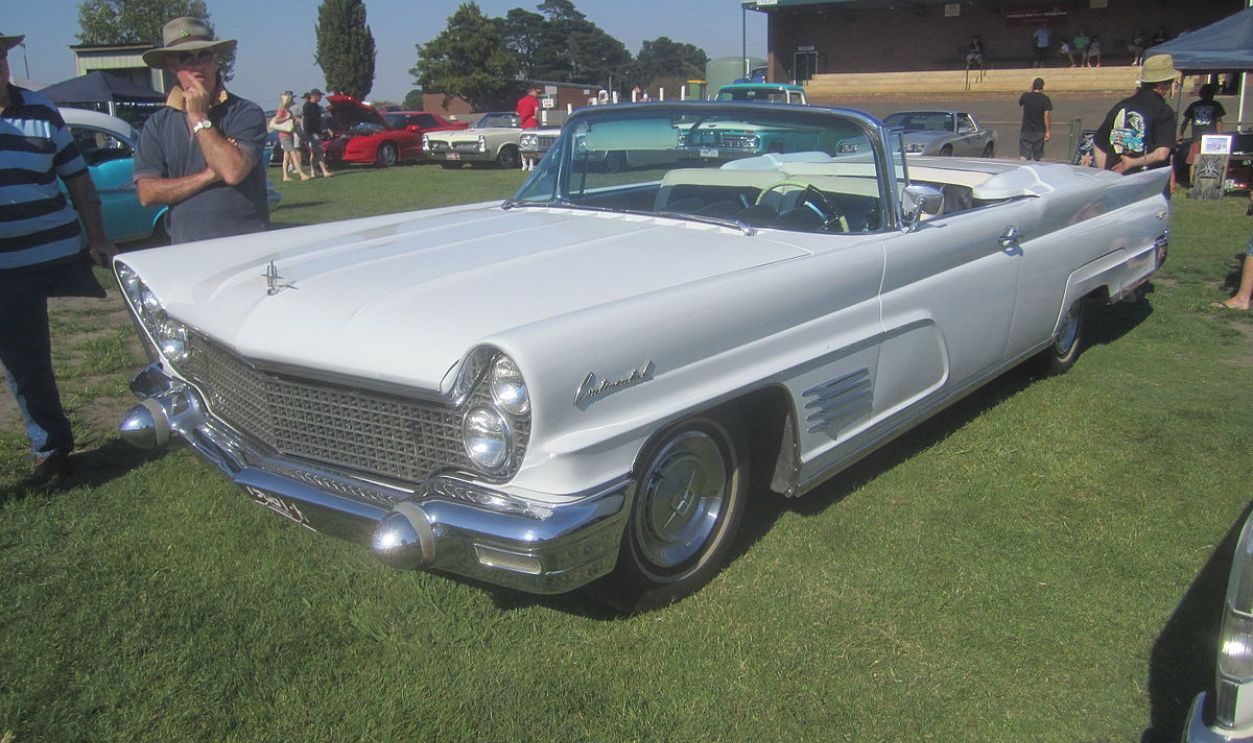 Sicnag, CC BY 2.0, Wikimedia Commons
Sicnag, CC BY 2.0, Wikimedia Commons
Bubble Tops
This iconic automotive design was known for its distinctive futuristic appearance. The term “bubble top” refers to a domed, transparent canopy that covers the car’s cabin to create a bubble-like effect. These tops were often made from clear or tinted acrylic and were designed to give the vehicle a space-age, sleek look.
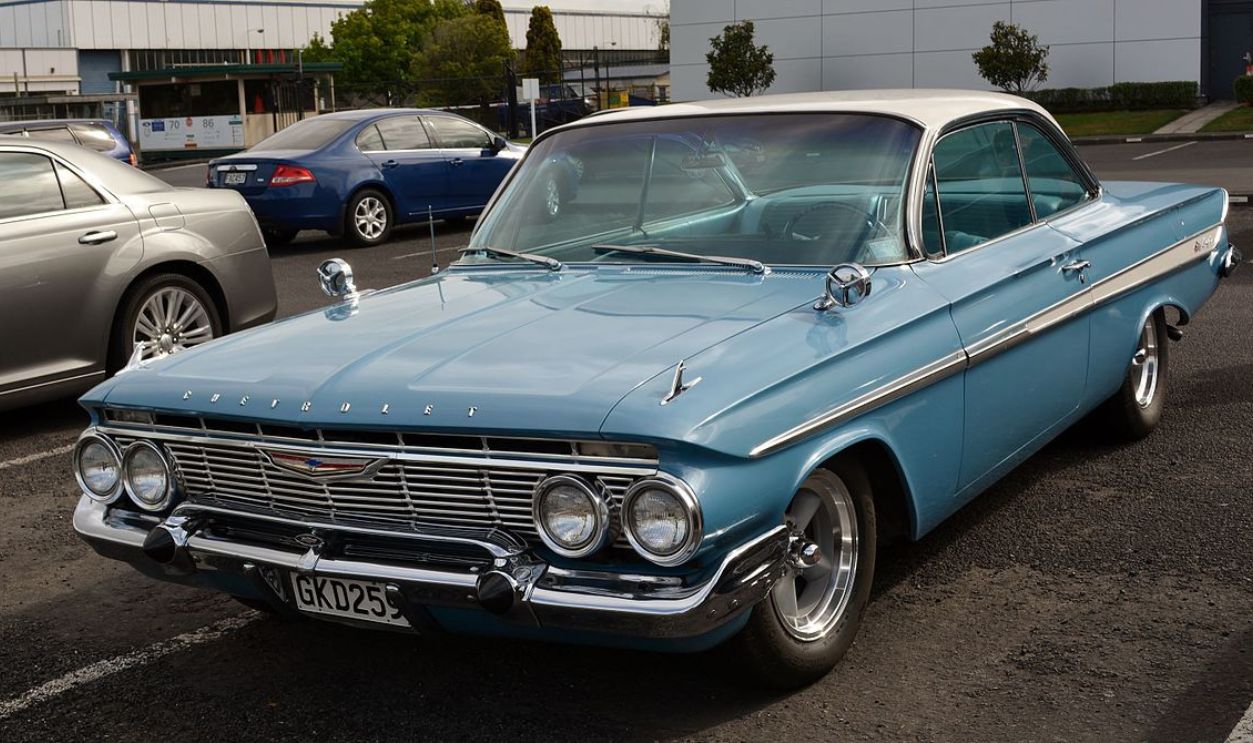 GPS 56, CC BY 2.0, Wikimedia Commons
GPS 56, CC BY 2.0, Wikimedia Commons
Swivel Seats
These seats counted for both convenience and luxury to cars. They could rotate to face the side of the vehicle, making it more comfortable for passengers to enter and exit the car. They were instrumental in larger vehicles, where the front seats could be challenging to maneuver around due to their fixed positions.
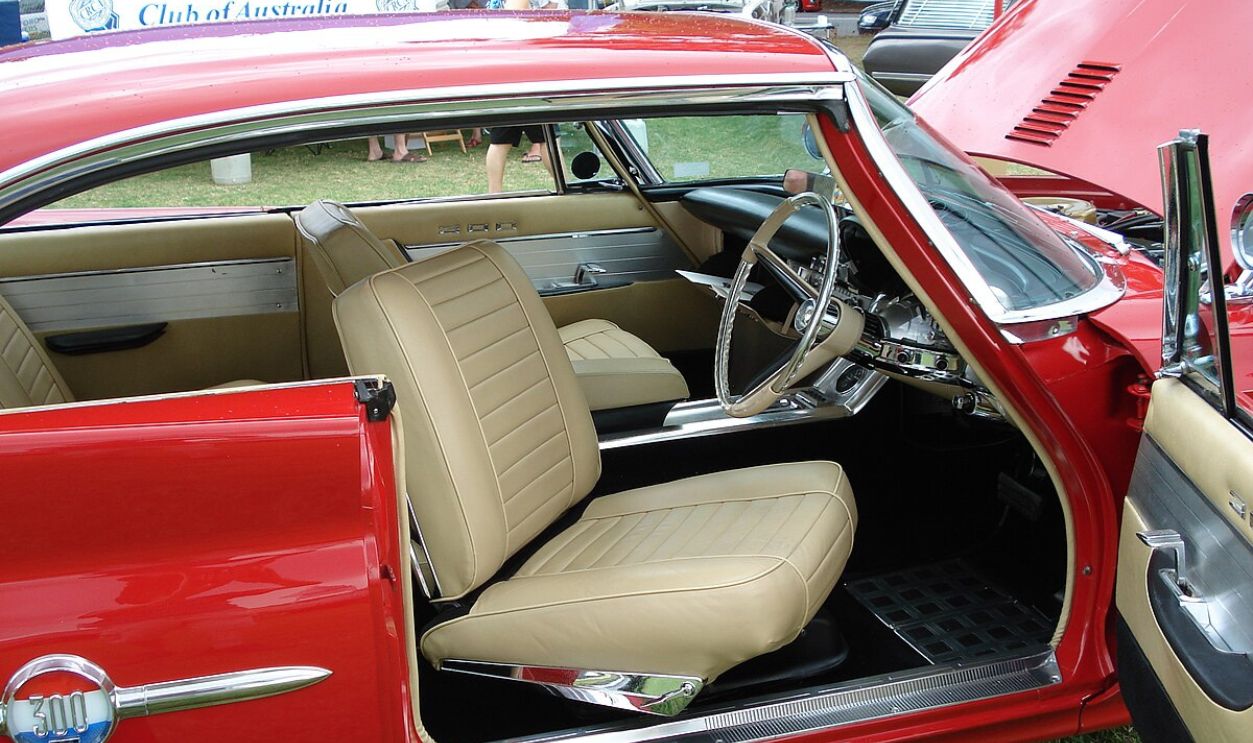 GTHO, CC BY-SA 3.0, Wikimedia Commons
GTHO, CC BY-SA 3.0, Wikimedia Commons
Cowl Induction Hoods
Another 60’s typical feature was the owl induction hood—a key performance feature in American muscle cars. This design was implemented to increase engine performance by allowing more air to flow into the engine compartment. It worked by using the car’s forward motion to direct air through a hood scoop.
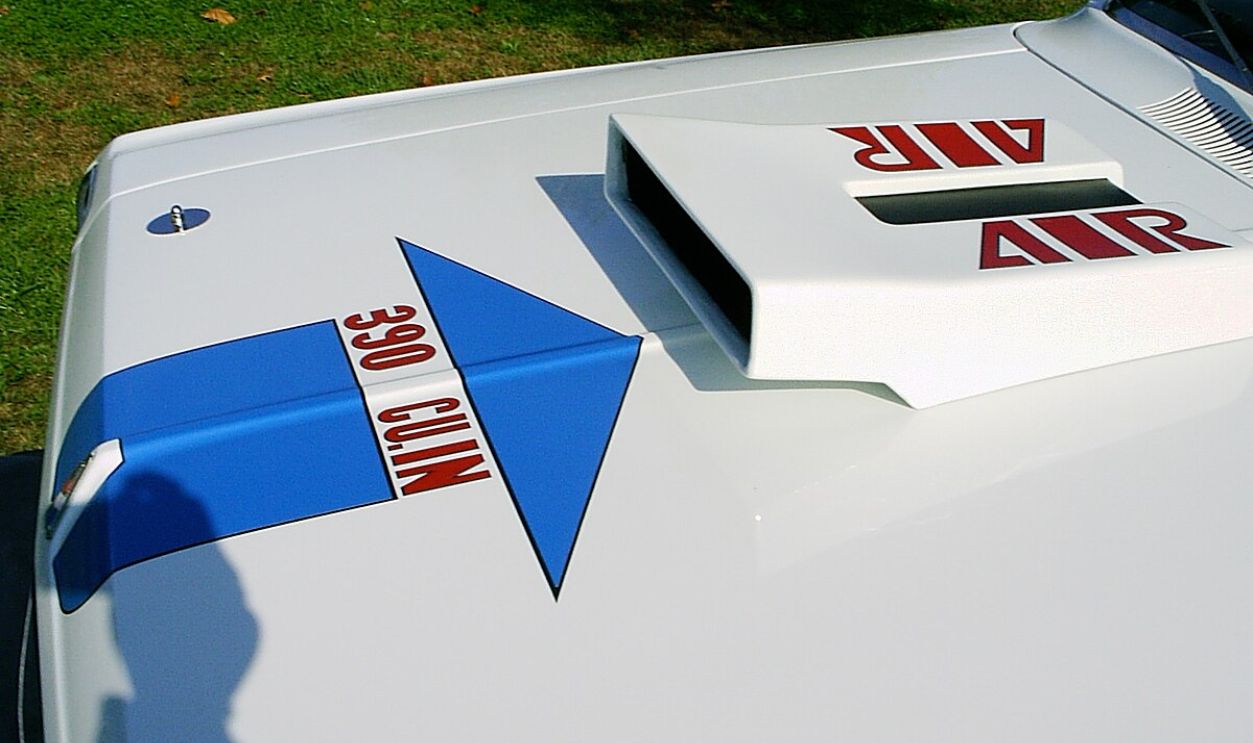 CZmarlin, Christopher Ziemnowicz, Wikimedia Commons
CZmarlin, Christopher Ziemnowicz, Wikimedia Commons
Power Antennas
Power antennas were an innovative feature that automated the raising and lowering of a vehicle’s antenna. Drivers could simply turn the car’s radio on or off, and the antenna would automatically extend or retract as needed. This offered convenience and reduced the hassle of adjusting the antenna manually.
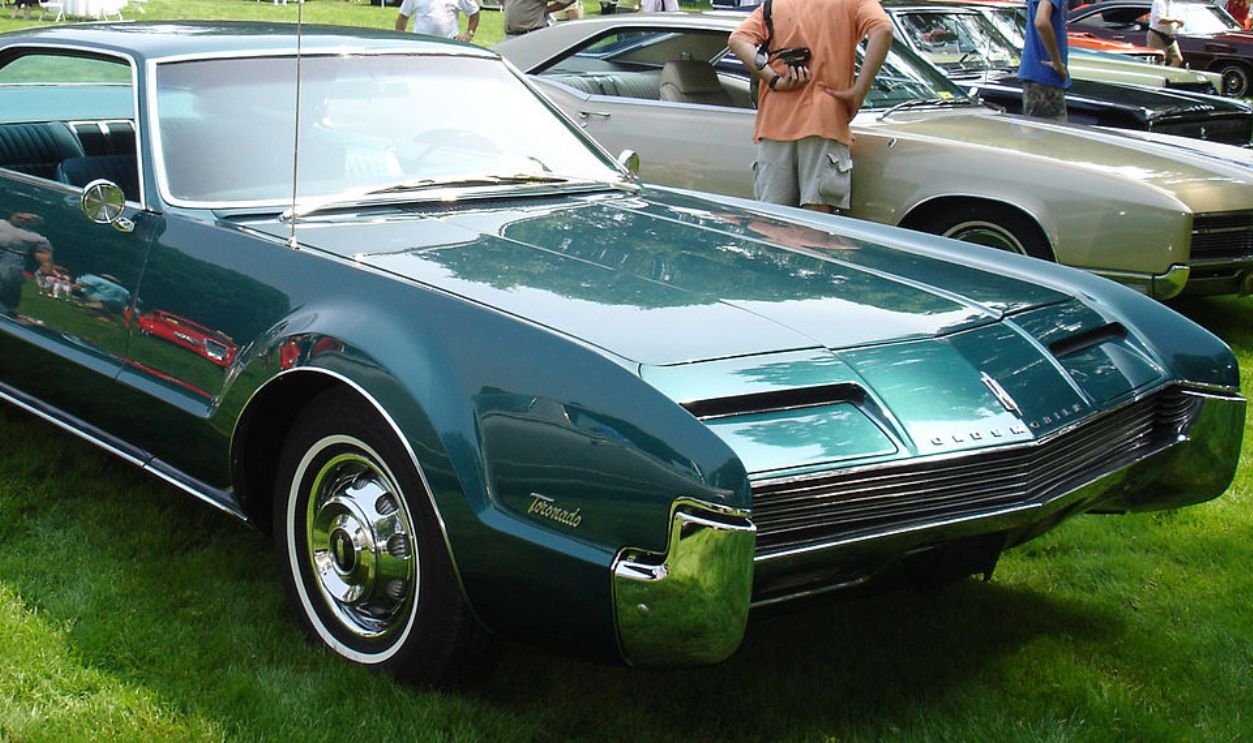 Karrmann, CC BY-SA 3.0, Wikimedia Commons
Karrmann, CC BY-SA 3.0, Wikimedia Commons
Wide Whitewall Tires
Wide whitewall tires were a stylistic feature in these vintage rides. With a bold white band running along the sidewall of the tire, these were popular on luxury models like Cadillac and Lincoln and became a symbol of sophistication. While they were phased out in the 1970s in favor of blackwall tires, they remain a beloved feature.
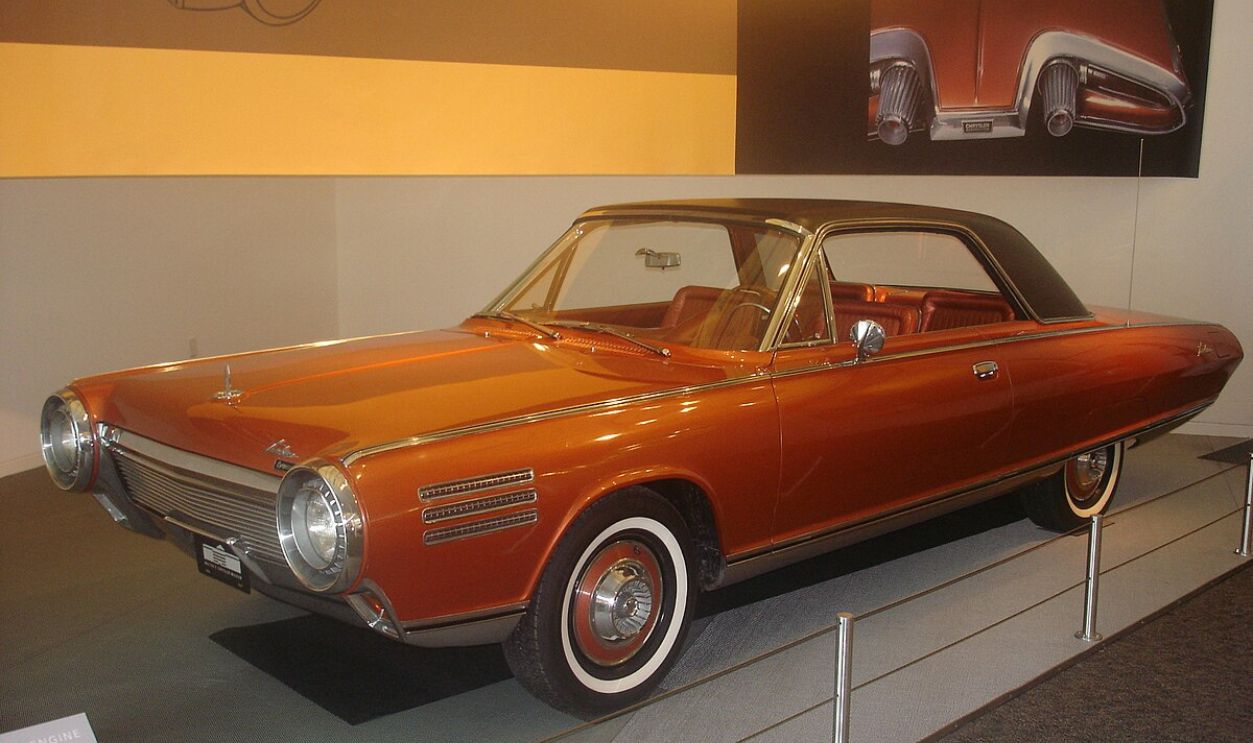 Karrmann, CC BY-SA 3.0, Wikimedia Commons
Karrmann, CC BY-SA 3.0, Wikimedia Commons
Spear-Shaped Grilles
Another distinctive design feature in 1960s cars was spear-shaped grilles. These grilles were pointed, spear-like shapes that extended across the front of the vehicle, often flaring outward or forming a V-shape. They became particularly popular in luxury and performance cars and symbolized speed.
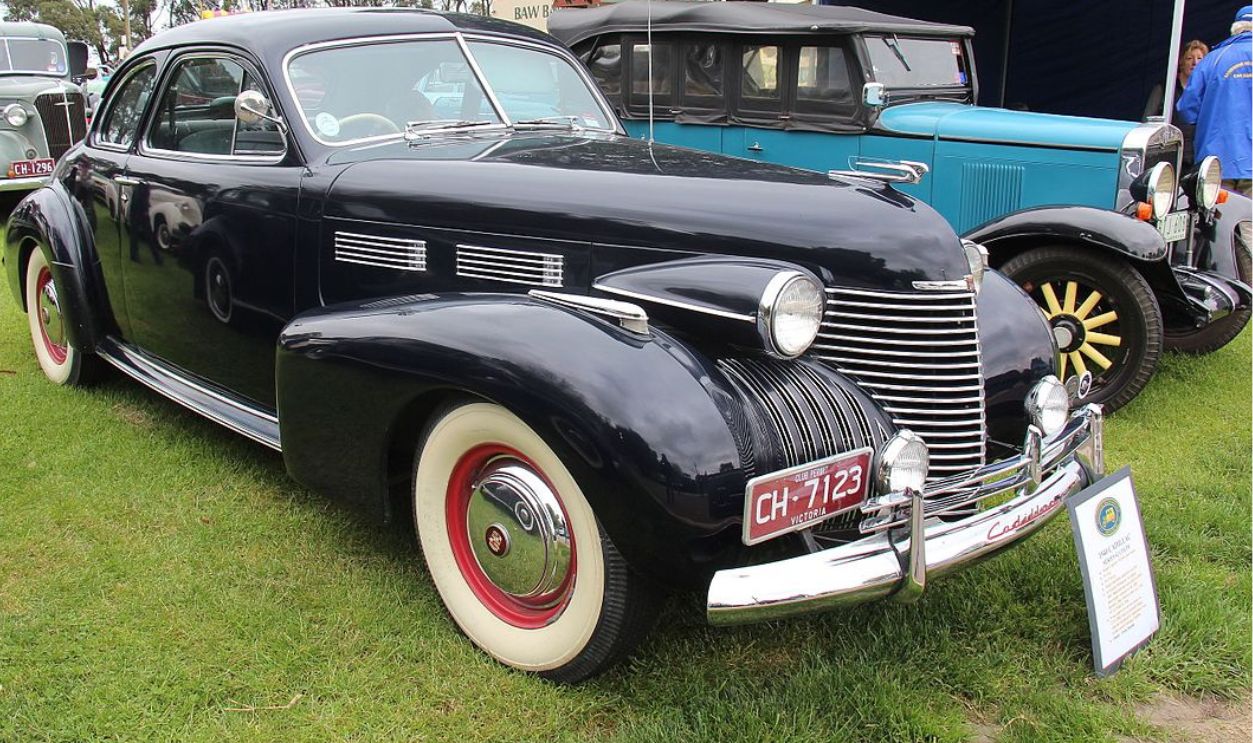 Sicnag, CC BY 2.0, Wikimedia Commons
Sicnag, CC BY 2.0, Wikimedia Commons
Built-In Ashtrays
Built-in ashtrays were a common feature in cars and were integrated into the vehicle’s interior, often positioned in the dashboard or armrests for easy access. They were designed to be sleek and compact, with a lid to conceal them when not in use, and were sometimes seen as a luxury feature, particularly in high-end cars.
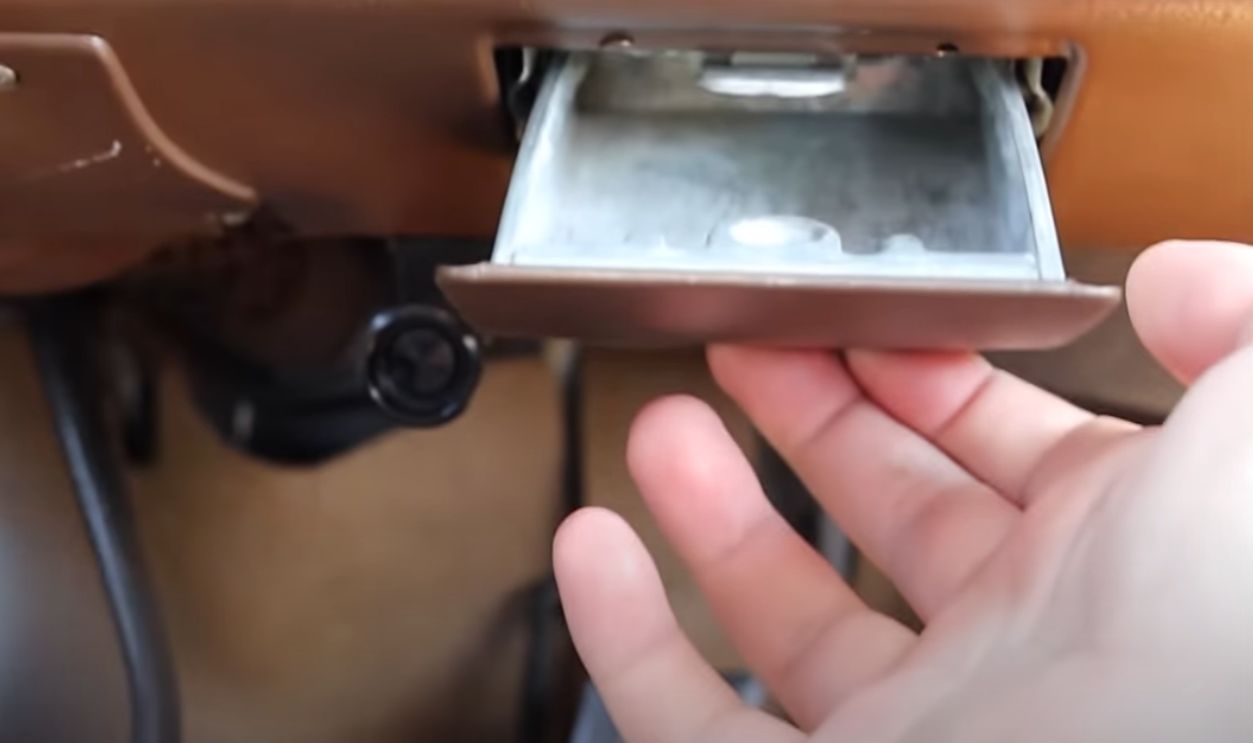 Cigarette Lighters - How They Were Invented & Why They Went Away! by Shooting Cars
Cigarette Lighters - How They Were Invented & Why They Went Away! by Shooting Cars
Actual Metal Keys
As opposed to modern key fobs or push-button start systems, actual metal keys were the primary method of starting and opening cars. These traditional metal keys were used to start the engine and ignition. They were often simple in design with the car manufacturer’s logo.
Track Seat Belts
Track or racing seat belts were a key safety feature in some 1960s cars, particularly performance and race-inspired models. They were designed to keep passengers securely in place during high-speed driving or sudden maneuvers and offered greater stability and protection.
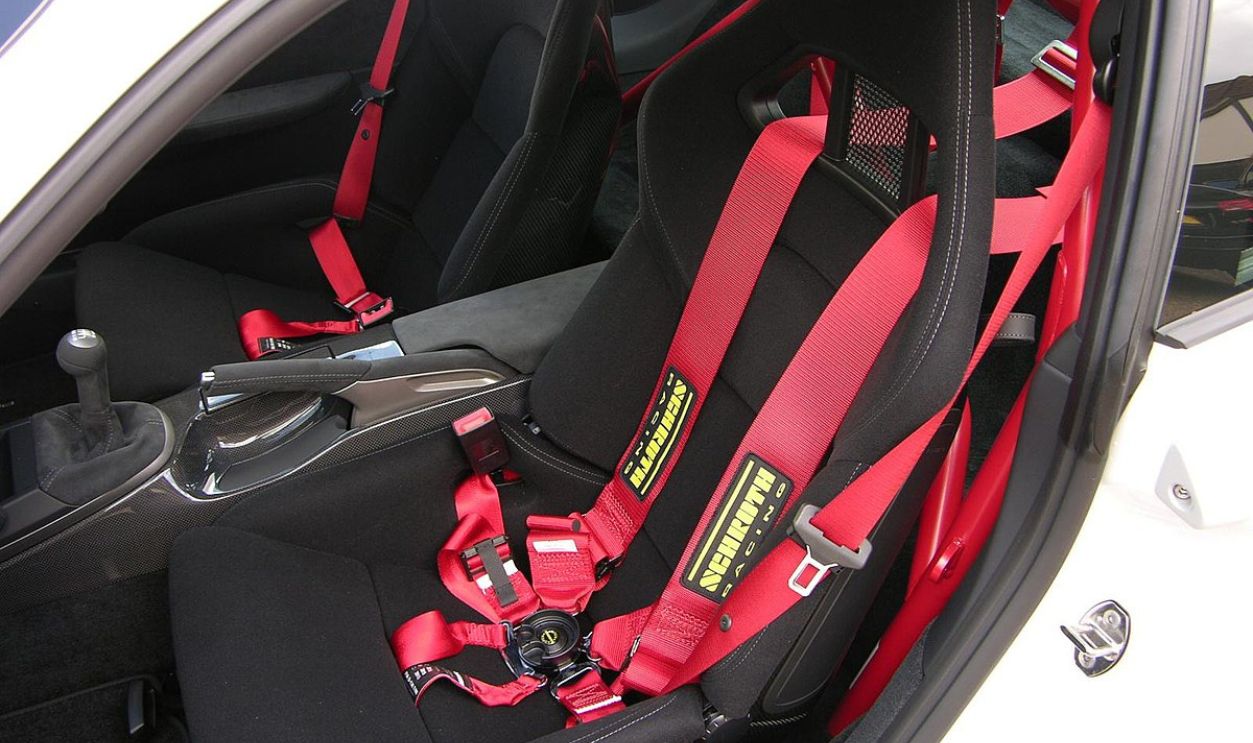 The Car Spy, CC BY 2.0, Wikimedia Commons
The Car Spy, CC BY 2.0, Wikimedia Commons
Car Phone
Oh, yes, car phones in the 60’s were a thing. They were actually a breakthrough feature at the time, introducing car owners to a new level of communication on the go. Often available in luxury cars, these operated through a mobile telephone system that required a direct connection to a fixed telephone line or a local network.
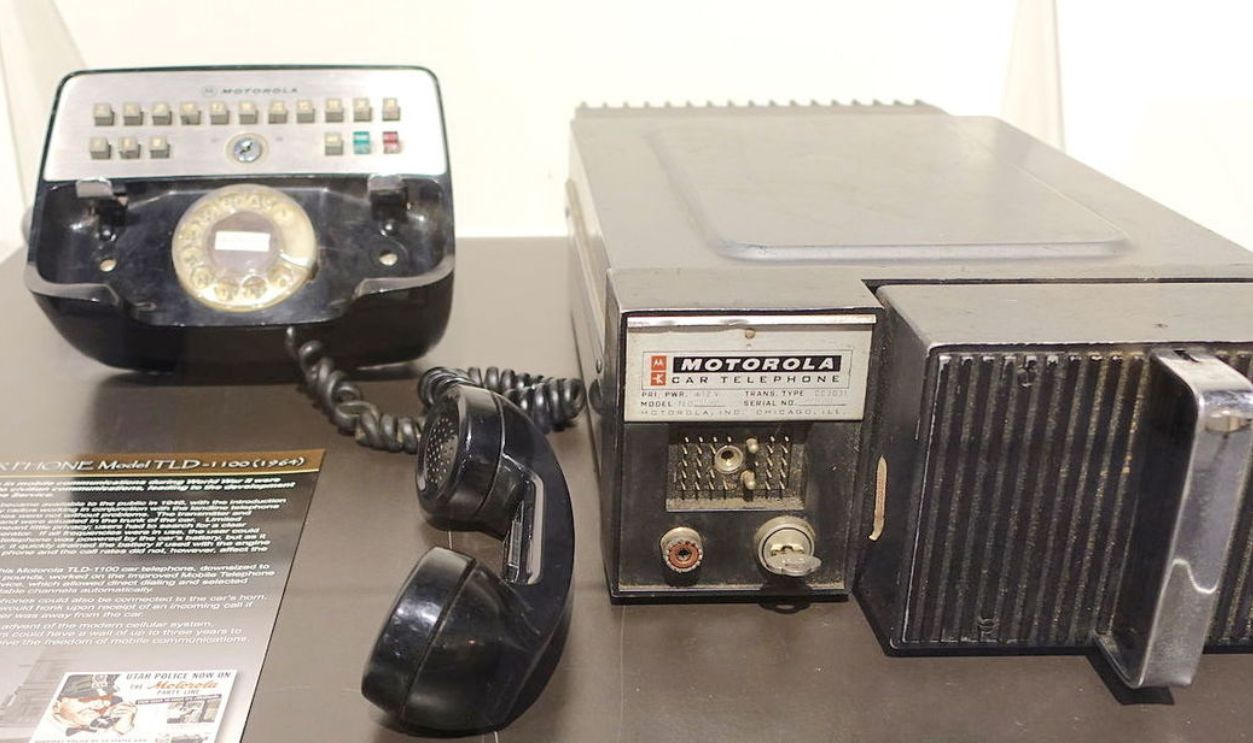 Daderot, CC0, Wikimedia Commons
Daderot, CC0, Wikimedia Commons
Manual Door Mirrors
Unlike modern power-adjustable mirrors, manual door mirrors require the driver or passenger to adjust them by hand. The mirrors were typically mounted on the door or the side fender of the vehicle, and to adjust the angle, a knob or lever was used, which was either on the mirror itself or inside the car.


